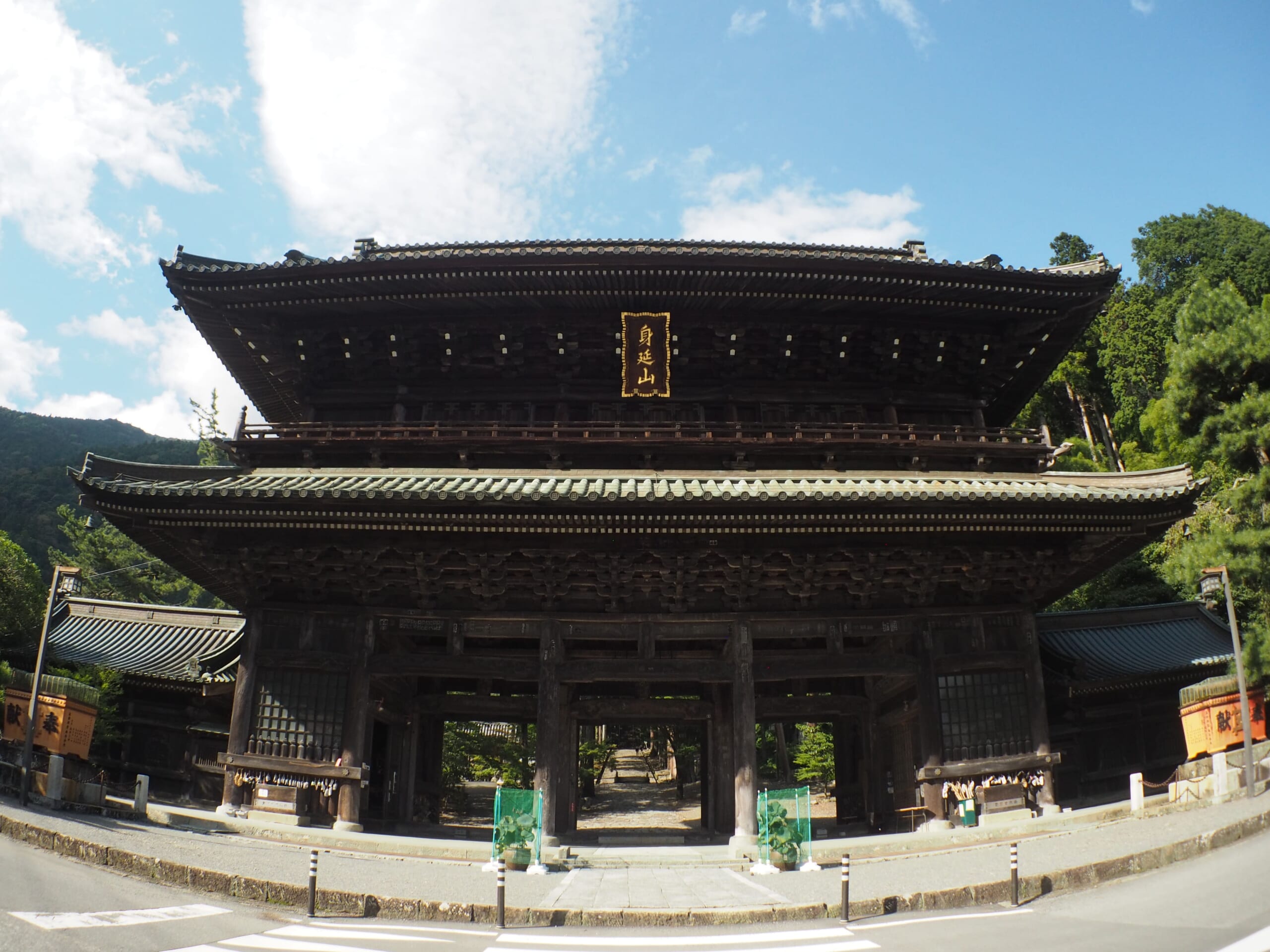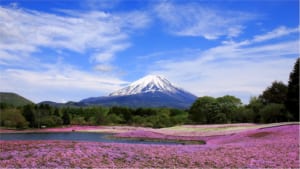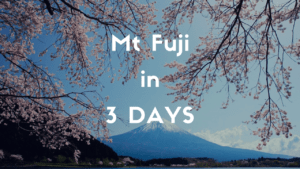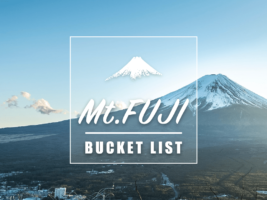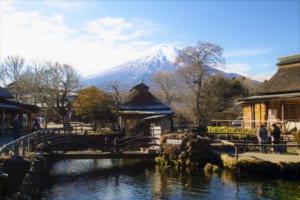Kakurinbo: The Temple Stay Experience Gaining Popularity in Yamanashi
A Cultural Retreat: Exploring the Depths of Japanese Tradition at Kakurinbo
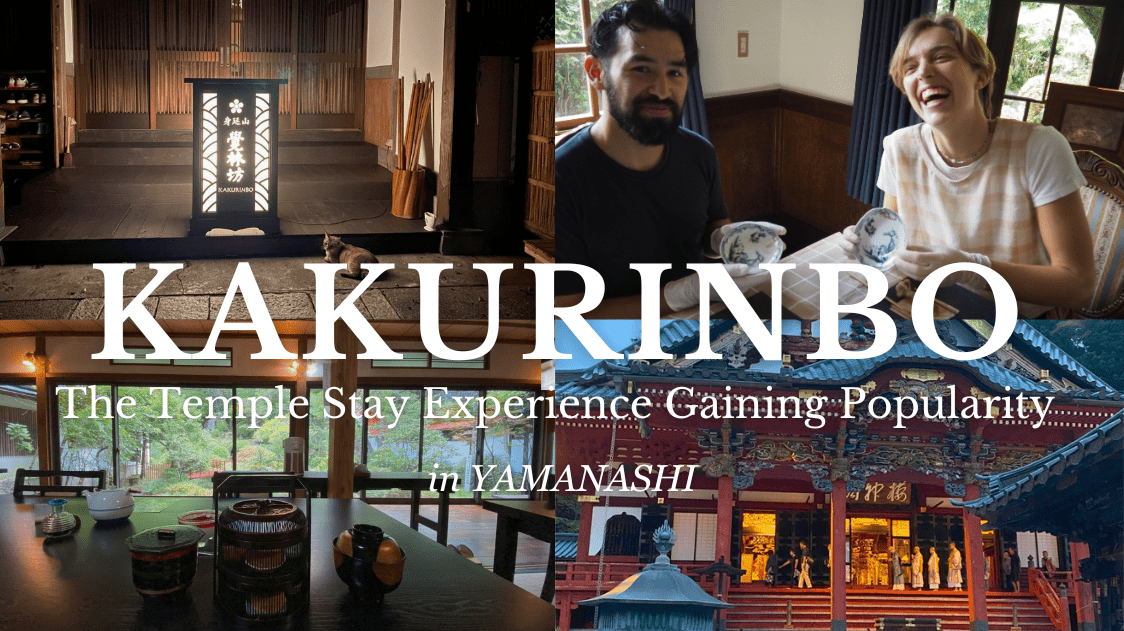
Located in the tranquil mountains of Yamanashi, Kakurinbo offers a unique blend of spiritual retreat and traditional Japanese hospitality.
This temple lodging, or shukubo (宿坊), has a rich history intertwined with Nichiren Buddhism and the natural beauty of Minobu. Increasingly popular among travelers seeking more than a typical hotel stay, Kakurinbo provides an immersive experience that combines cultural activities, local cuisine, and peaceful accommodations.
As modern travelers look for more sustainable and educational tourism options, Kakurinbo stands out as a prime destination where history, spirituality, and nature harmoniously converge.
I had the opportunity to stay at Kakurinbo for a night, so I will share my experience in this article! Hopefully, I can spark an interest in you.
What is Kakurinbo?
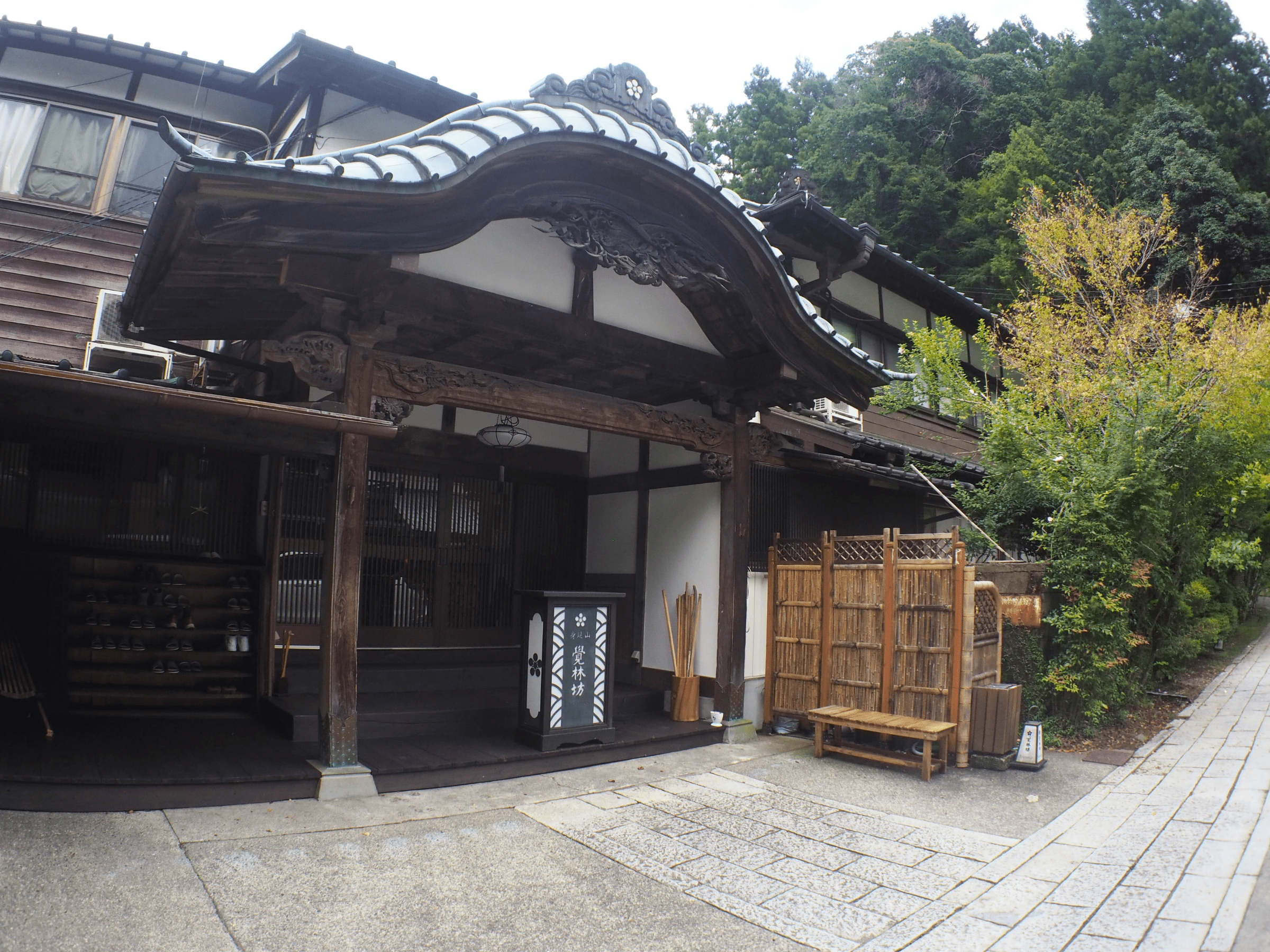
Kakurinbo (覚林坊) is one of the oldest and most respected temple lodgings in Minobu, with a history stretching back over 550 years. It is part of the Gyogakuin temple complex, a satellite of the revered Kuonji Temple, the headquarters of Nichiren Shu Buddhism. Visitors to Kakurinbo can experience the tranquility and spirituality of staying in a historical Buddhist temple, while also enjoying modern amenities and services that cater to international travelers.
Awarded the prestigious “Best Inbound Travel” honor at the Japan Travel Awards 2024, Kakurinbo is known for its innovative approach to blending traditional shukubo culture with modern hospitality. Multilingual staff, dietary accommodations, and a range of cultural activities make Kakurinbo accessible and appealing to visitors from all backgrounds.
Apart from the various room types that Kakurinbo offers, you can also stay at the Guest Villa Ebisuya (迎賓館えびす屋), which is located just a few minutes by car. It is a beautifully restored 1930s country house offering a private, luxurious experience near the main temple lodging. Guests can enjoy a private Japanese garden, a furnished terrace overlooking a forested stream, and a fully equipped kitchen, making it perfect for self-catering stays.
Nearby, the cozy Cafe Zencho offers fresh, local meals and snacks, complementing the serene temple stay with casual dining.
About Mt. Minobu
Mt. Minobu holds great spiritual significance as it is home to Kuonji Temple, the head temple of Nichiren Shu Buddhism. However, it’s important to distinguish between “Mt. Minobu” (the mountain) and “Minobu” (the town). While Minobu includes the mountain, the article here focuses on the village surrounding the temple, which is known for its peaceful atmosphere and historical importance.
Mt. Minobu became a key site for Nichiren Buddhism after Nichiren Shonin, the founder of the sect, established Kuonji Temple in 1274. Pilgrims from all over Japan climb the 287 steep steps leading to Kuonji’s main hall to practice devotion and gain spiritual insight. The connection between Minobu and Nichiren Shonin has made this area a pilgrimage site, with Kakurinbo providing a convenient and spiritual place for travelers to rest and recharge.
My Experience Staying at Kakurinbo
As I previously mentioned, I had the opportunity to stay at Kakurinbo. Here is my experience.
1. Arriving at Kakurinbo
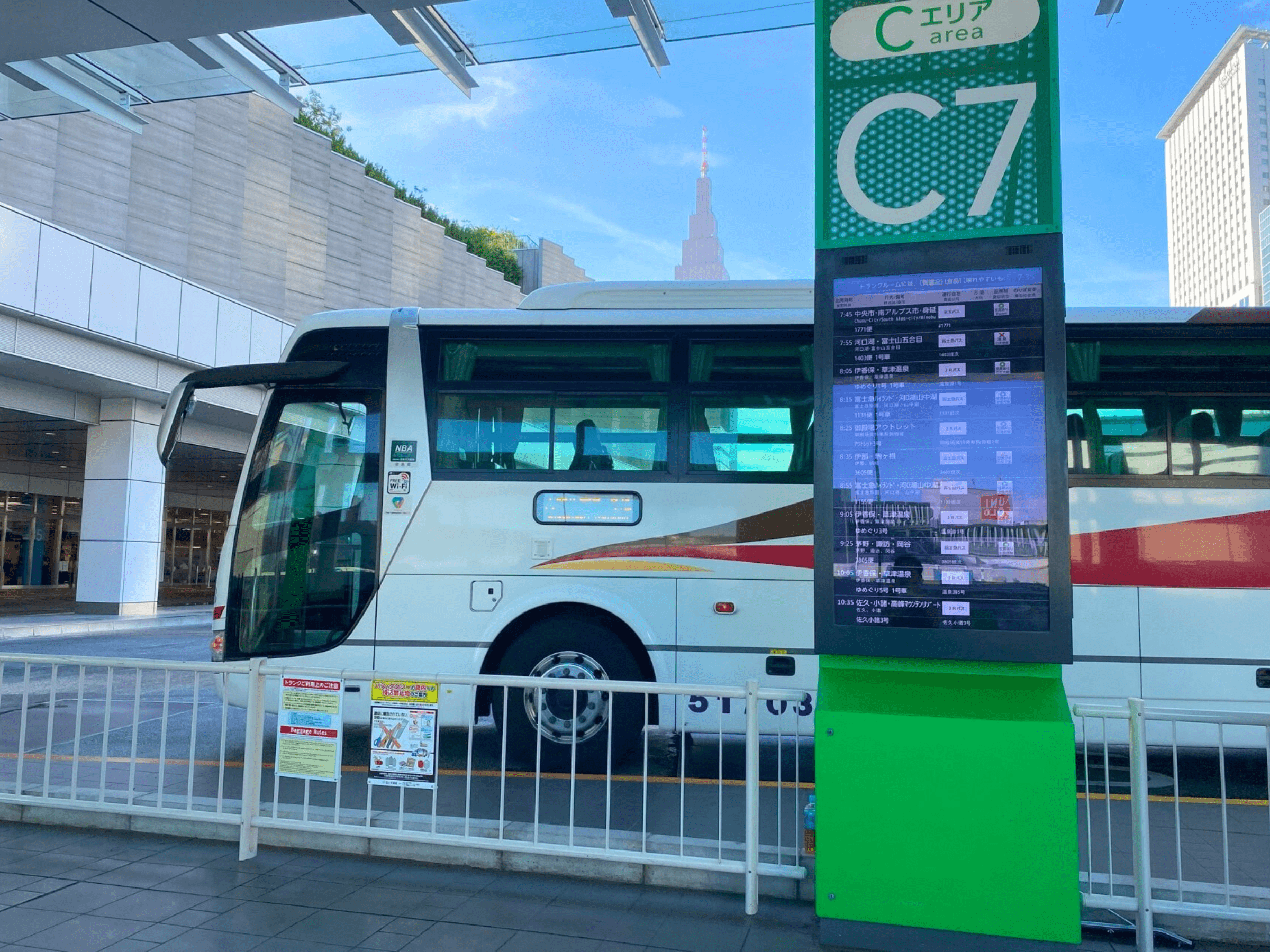
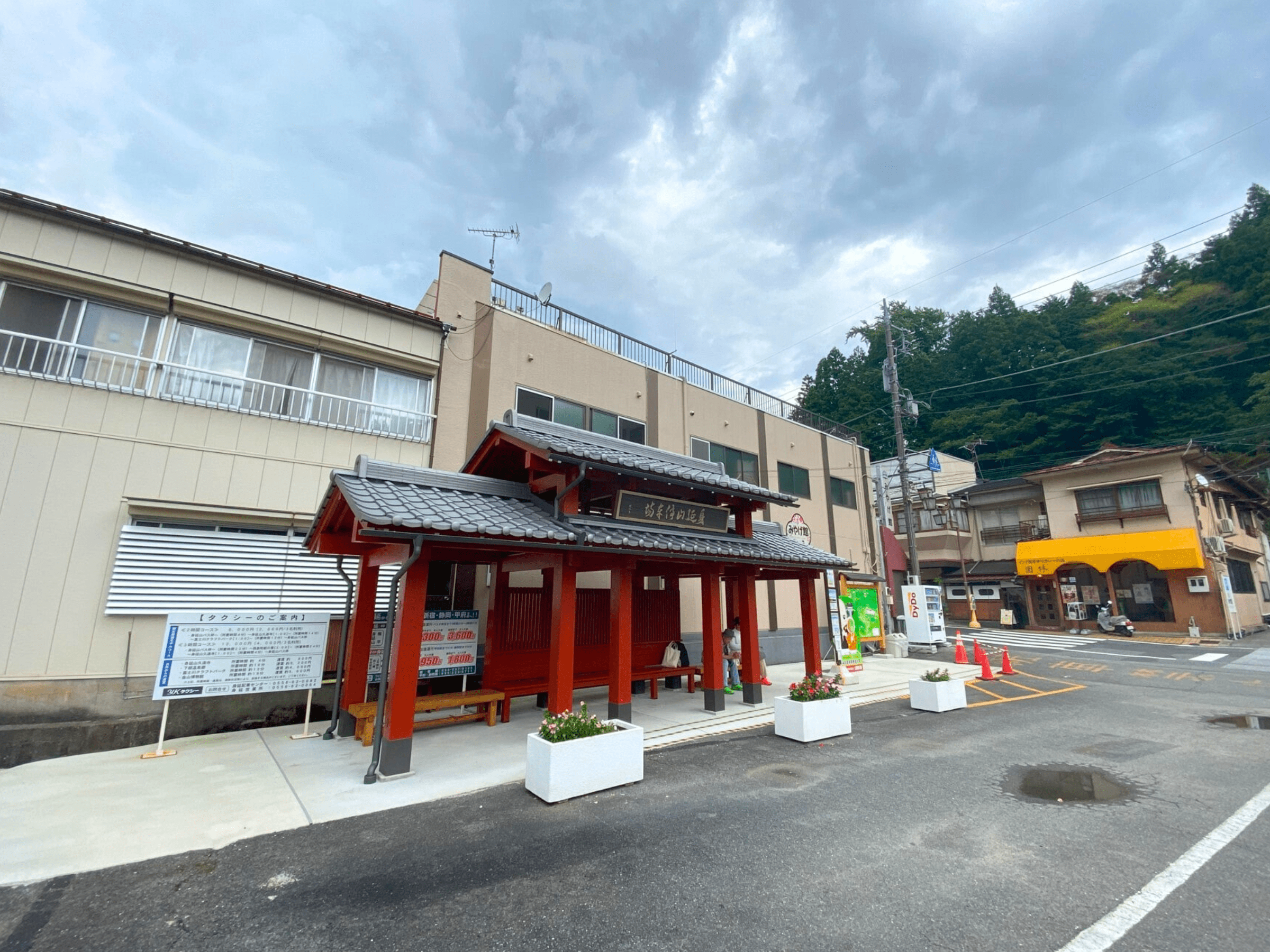
Getting to Kakurinbo from Tokyo was easy. Although there are several ways you can choose from, I decided to take the highway bus from Shinjuku. It took about three and a half hours to get to “Minobusan” bus stop, which is just about 10 minutes walk from Kakurinbo.
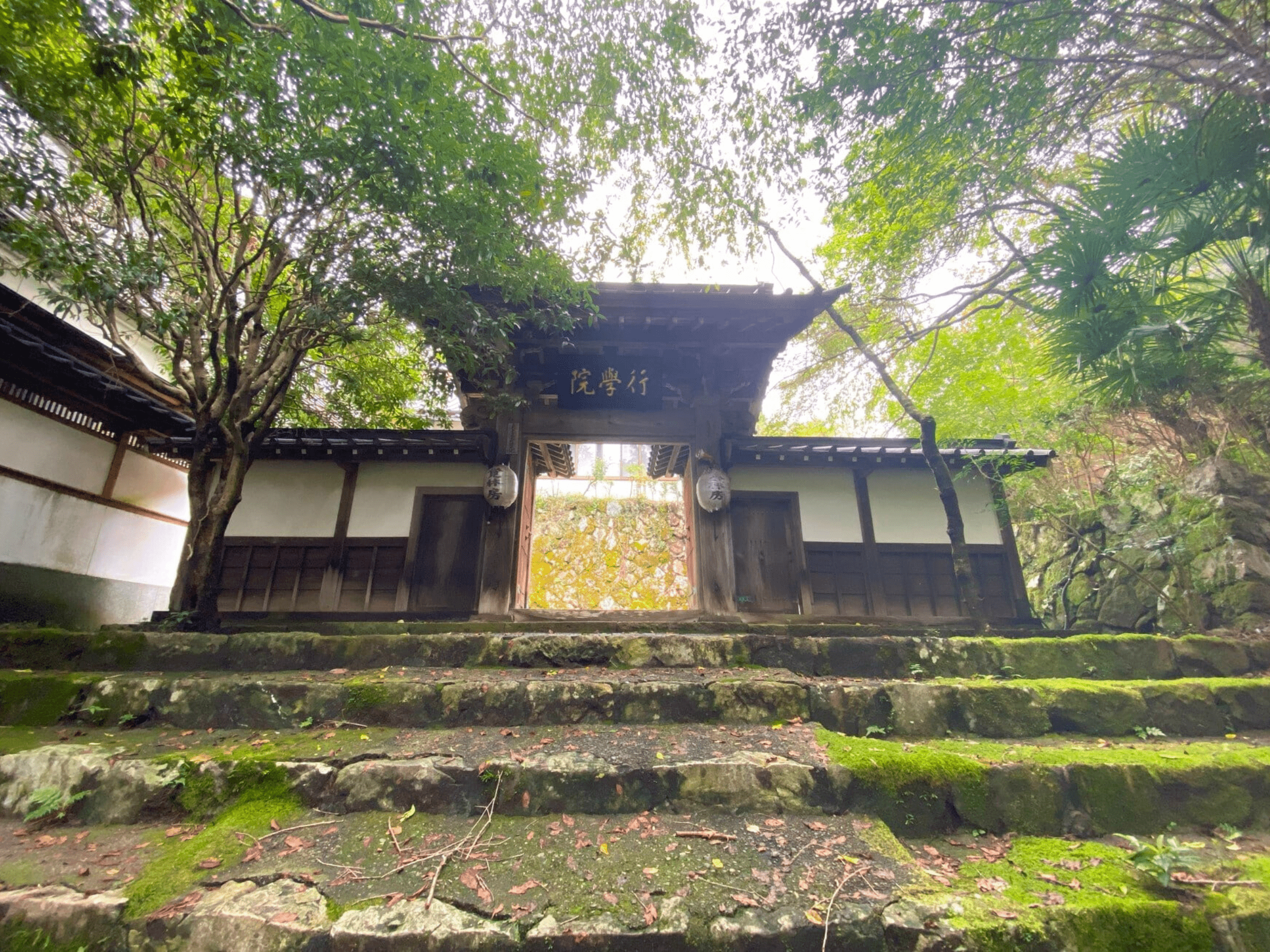
Arriving at Kakurinbo was like stepping into another world, where centuries-old traditions meet modern comfort.

The facilities, including the traditional rooms, a stunning Japanese garden, a souvenir shop with unique offerings, and even a bath infused with local wine salts, all contribute to a peaceful and memorable stay.

Originally built for monks, Kakurinbo now welcomes pilgrims and travelers. Guests can enjoy views of the beautiful Japanese garden designed by Muso Kokushi or the stunning weeping cherry tree in spring.
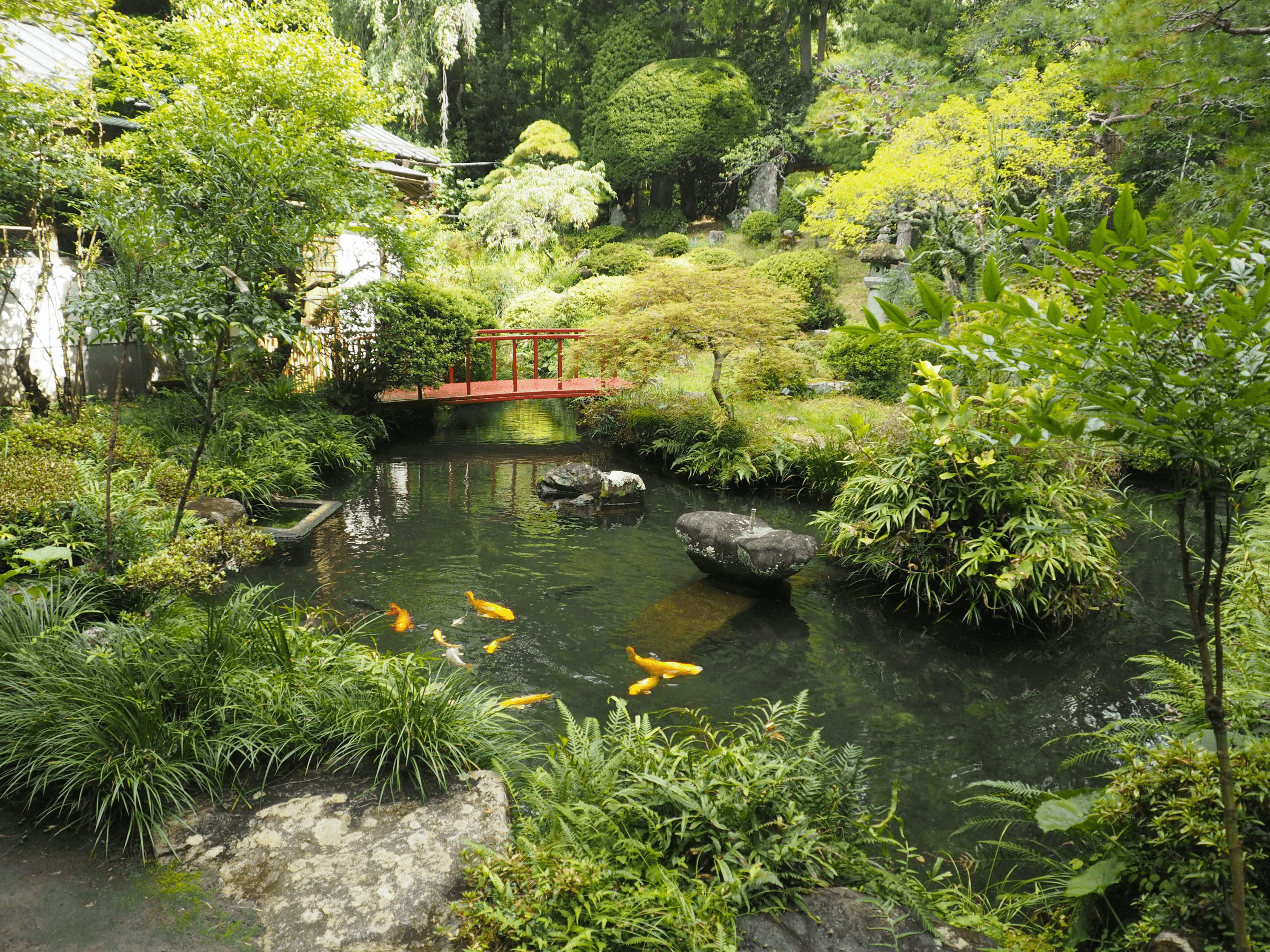
As I walked through the peaceful corridors, I was reminded of the temple’s rich history, evident in every corner of the property.
Kakurinbo combines traditional charm with modern comforts, featuring step-free corridors, Western-style toilets with bidets, and additional table seating in the dining area. This fusion of old and new ensures a peaceful, comfortable stay while preserving the spiritual atmosphere of the temple.
2. The Rooms at Kakurinbo
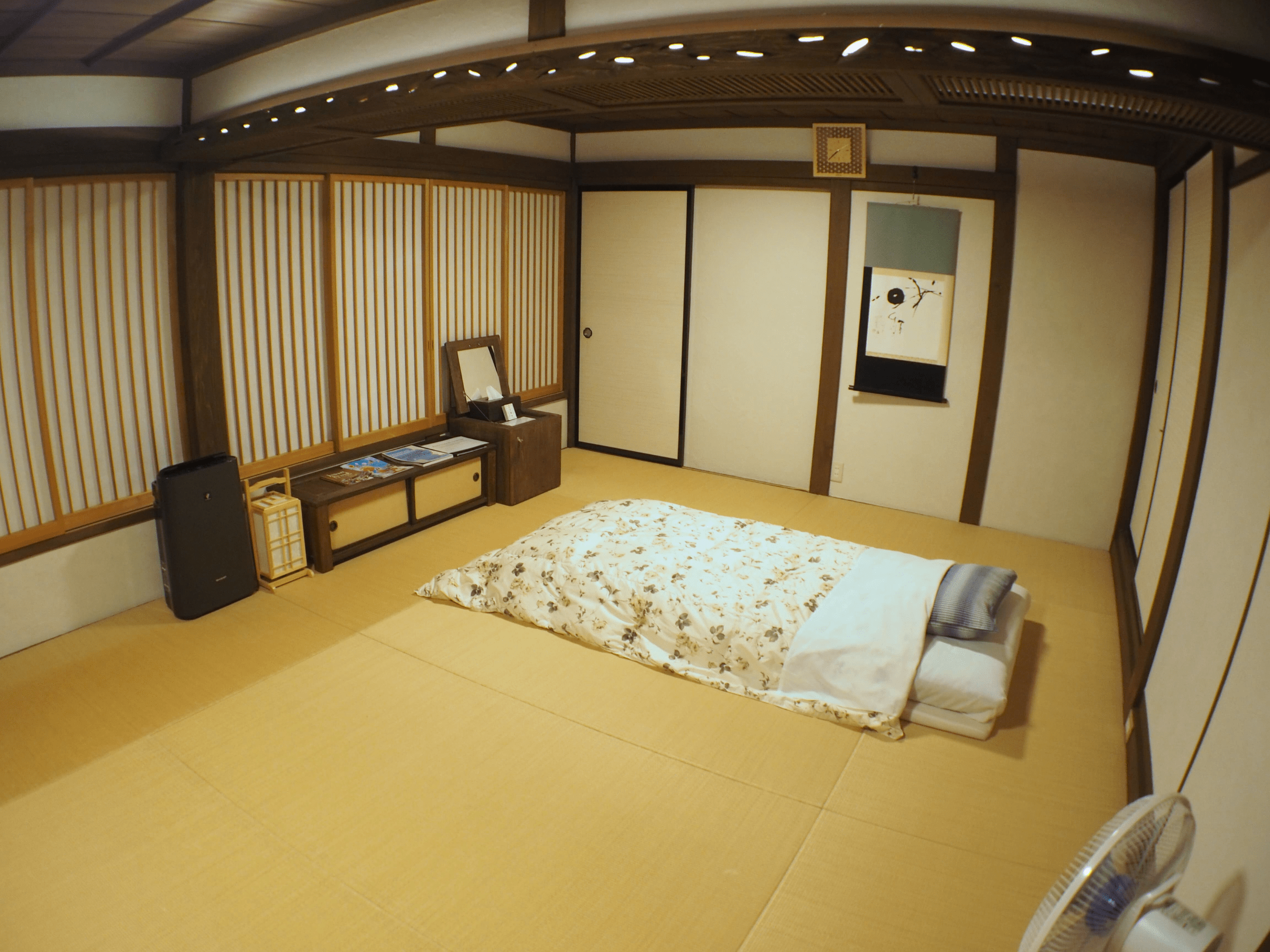
The rooms at Kakurinbo offer an authentic Japanese experience, designed in traditional washitsu style. Separated only by sliding fusuma doors, the 20 rooms can be adjusted for different group sizes. To ensure privacy, guests are typically placed in corner rooms or those offering more seclusion.
My room was located next to the hondo (main hall). They told me many international visitors love this room because it is a little removed from the other rooms and because you can pass by the main hall. This room has an AC and a modern bathroom, which made it comfortable during my stay.

The garden-view rooms at the main lodging are equally stunning, offering guests a serene, contemplative atmosphere. In front of each room, an authentic Kimono is adorned, which guests can wear if they ask.

Maintaining its original structure, most rooms do not have modern amenities like televisions, inviting guests to enjoy a tranquil, undisturbed stay.
Situated away from the main path of Mt. Minobu, Kakurinbo provides a peaceful retreat, allowing visitors to fully immerse themselves in the serenity and spirituality of their surroundings.
3. The Baths at Kakurinbo


Kakurinbo features two large baths, which can be reserved for private use (30 minutes per person). Since the baths are not divided into a men’s and women’s room, if you are visiting as a couple, you can either use the bath one person at a time (each for 30 minutes) or bathe together for an hour.
The baths are scented with wine bath salts, adding a unique touch to the experience.
What I appreciated most was the flexibility of the bath system—guests can relax alone or with a partner, and even those with tattoos are welcome, making it inclusive for international visitors unfamiliar with Japan’s bath culture.
4. The Food at Kakurinbo
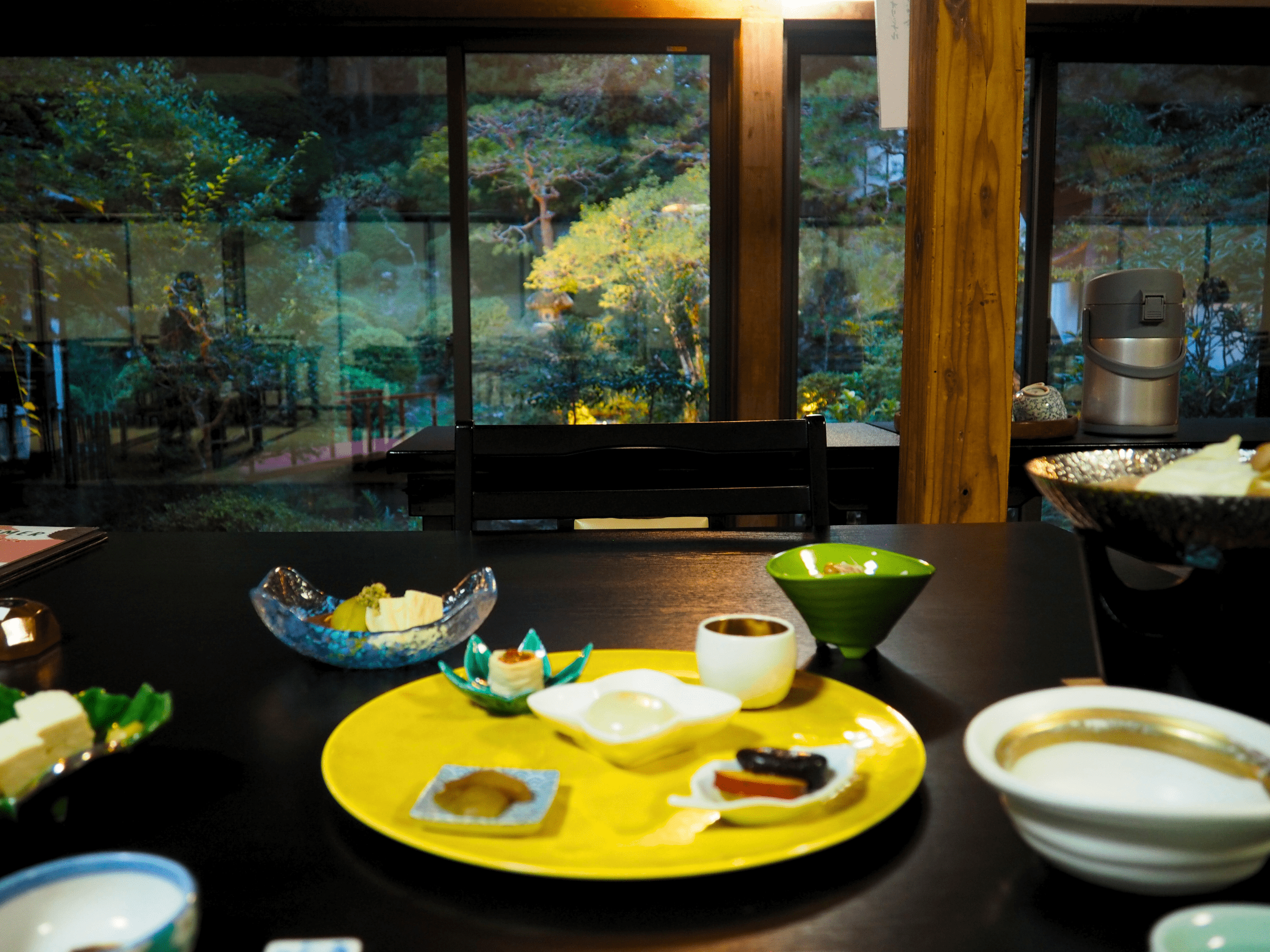
Kakurinbo’s cuisine is rooted in the Buddhist culinary traditions of Minobu, with a focus on local ingredients like yuba (tofu skin), shiitake mushrooms, and Akebono soybeans. These ingredients, staples of Buddhist vegetarian meals (shojin ryori), are presented in creative, modern dishes such as kaiseki meals that highlight seasonal flavors.
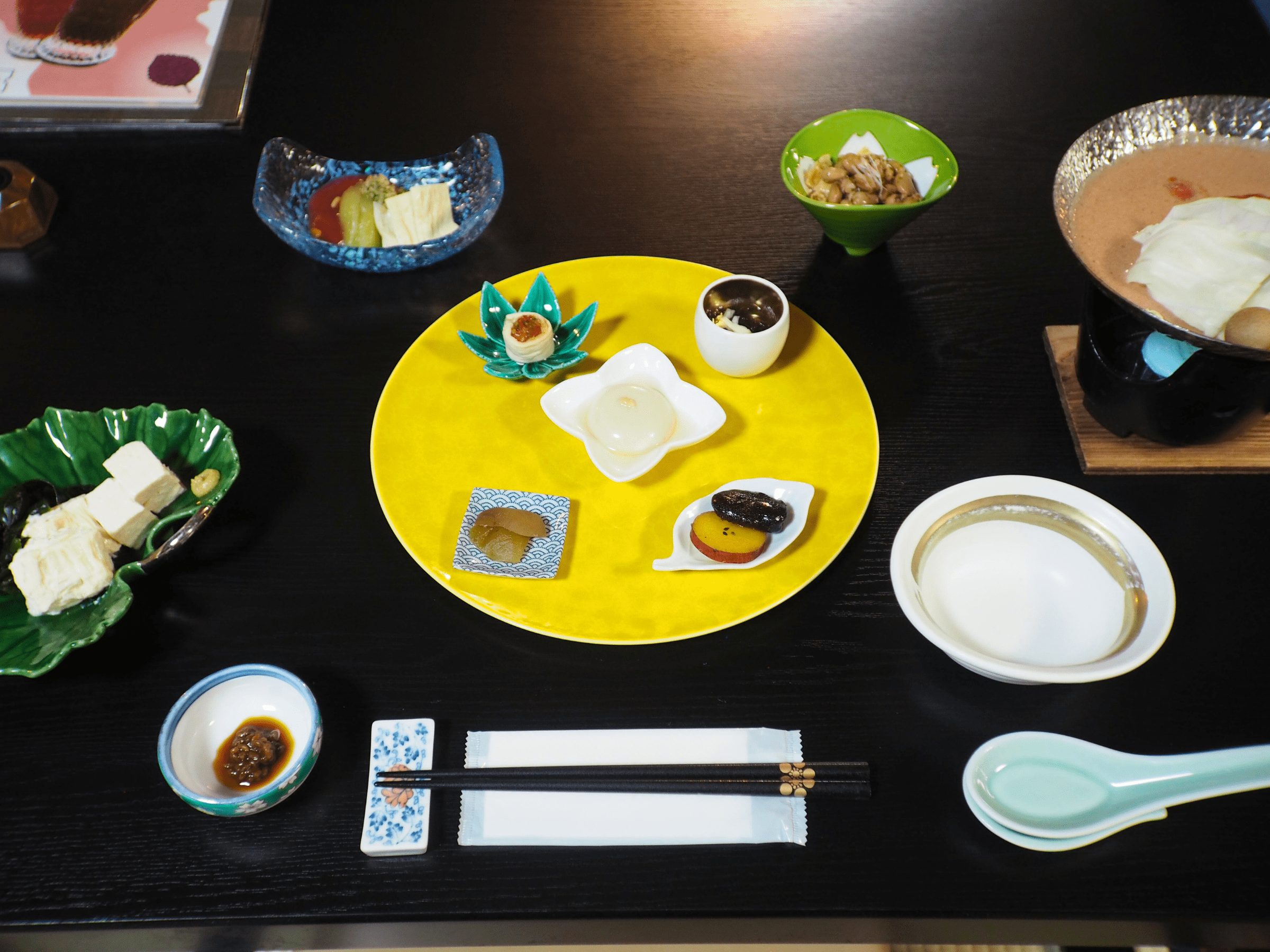
During my stay at Minobu, I had dinner and breakfast at Kakurinbo. The dinner was a Kaiseki style meal, based on Shojin Ryori (traditional Buddhist cooking).

Kakurinbo’s kitchen is flexible with dietary preferences, offering vegan, vegetarian, and gluten-free options without compromising the traditional essence of the meals.

Additionally, Kakurinbo offers a range of Yamanashi wines, local sake, and fruit-based beverages. One of their most popular beverages is the “temple beer” and “Plum beer,” which incorporates surplus plums as part of a sustainable initiative.

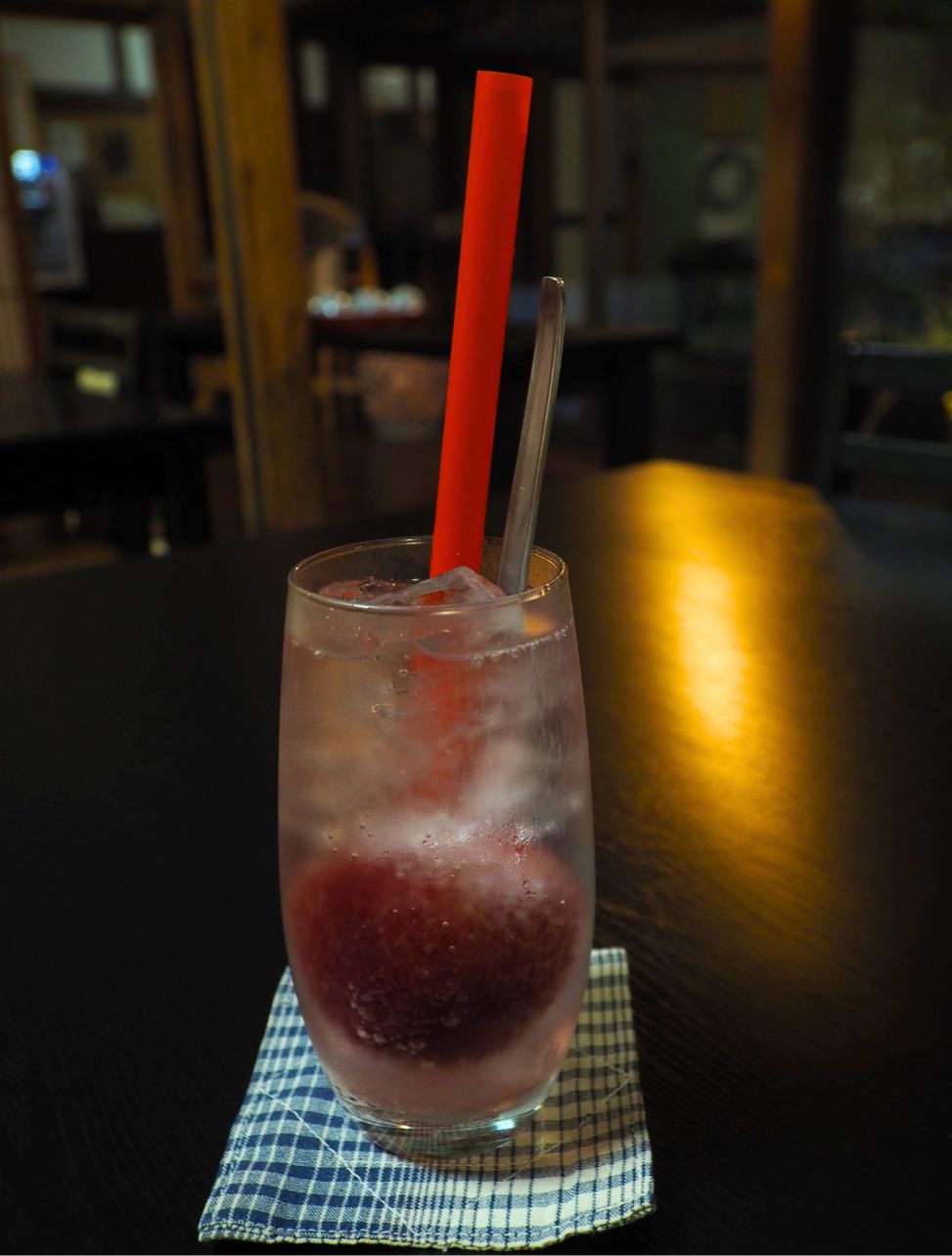

I got the opportunity to try the Plum Cider, the Temple Beer, and the Plum Temple Beer. The plum cider comes with a whole frozen plum, which you can chip using a spoon to dissolve it with the cider.
The breakfast was a typical Japanese-style meal. It included rice, miso soup, and various side dishes. I also tried the Plum yogurt, which was terrific.

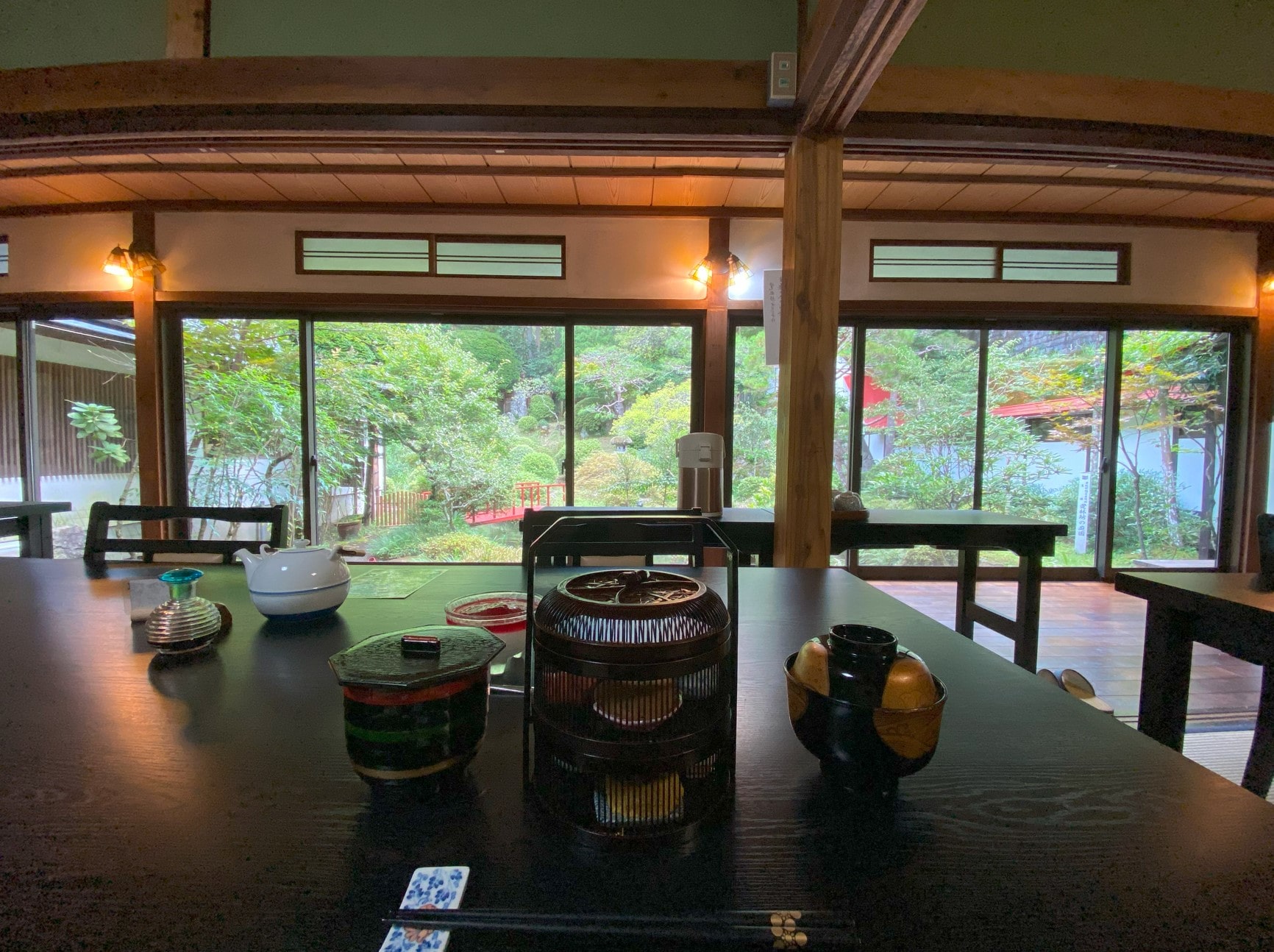
The emphasis on locally sourced ingredients and sustainable practices enhances Kakurinbo’s commitment to promoting the region’s food culture while catering to international guests with diverse needs. This is just one of the many efforts made by Kakurinbo to provide sustainable tourism.
Through its thoughtful and inclusive approach to dining, Kakurinbo provides a culinary experience that complements its spiritual and cultural atmosphere.
5. The Guest Villa Ebisuya
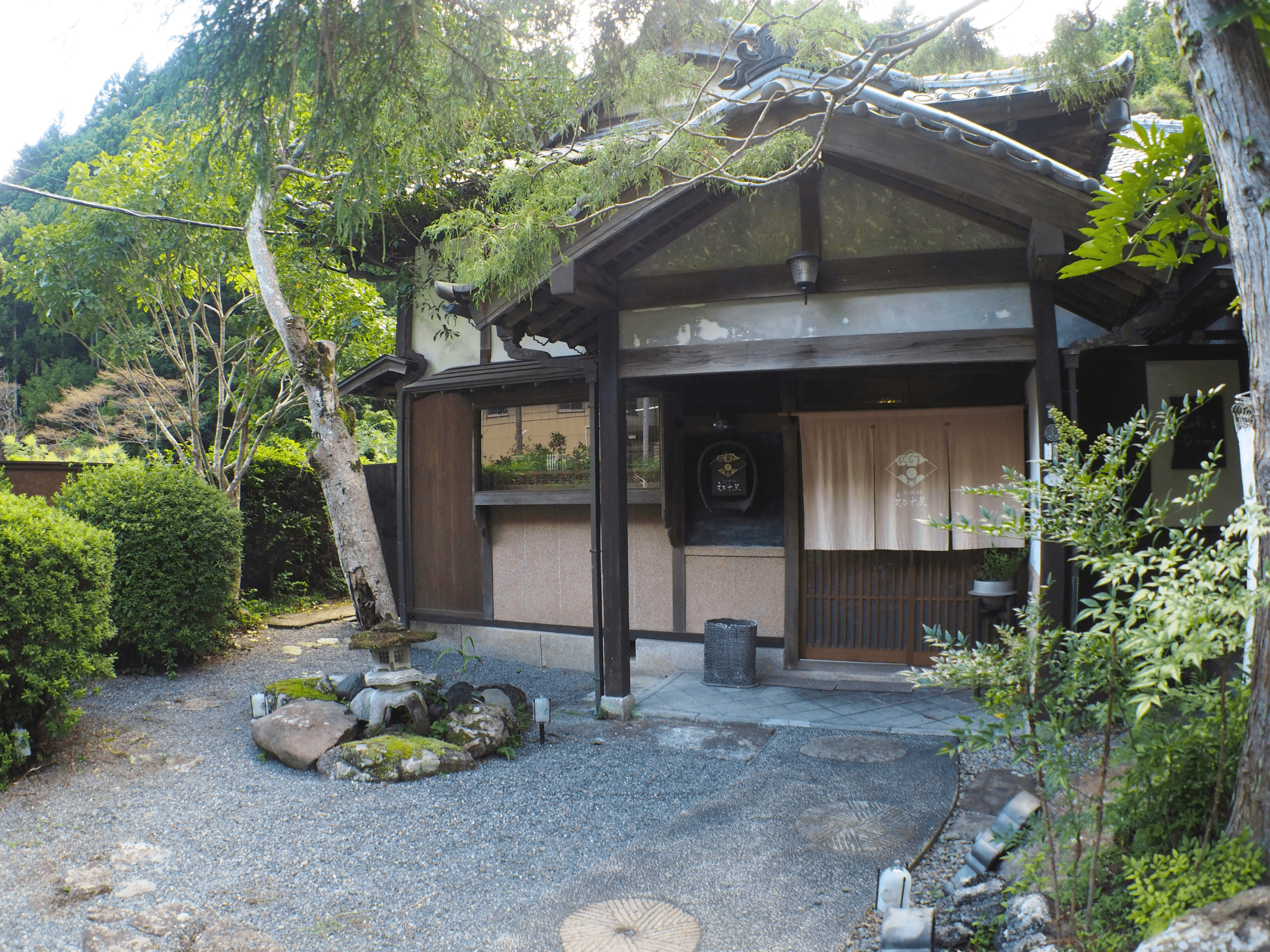
Guest Villa Ebisuya is a beautifully restored country house blending the charm of 1930s Japan with modern comforts.
Built in 1933 for a wealthy merchant in the spiritual village of Minobusan, the villa was renovated in 2021 to preserve its original structure while adding state-of-the-art amenities. The interior showcases authentic décor and Yamanashi craftsmanship, and the villa offers a secluded, peaceful atmosphere.
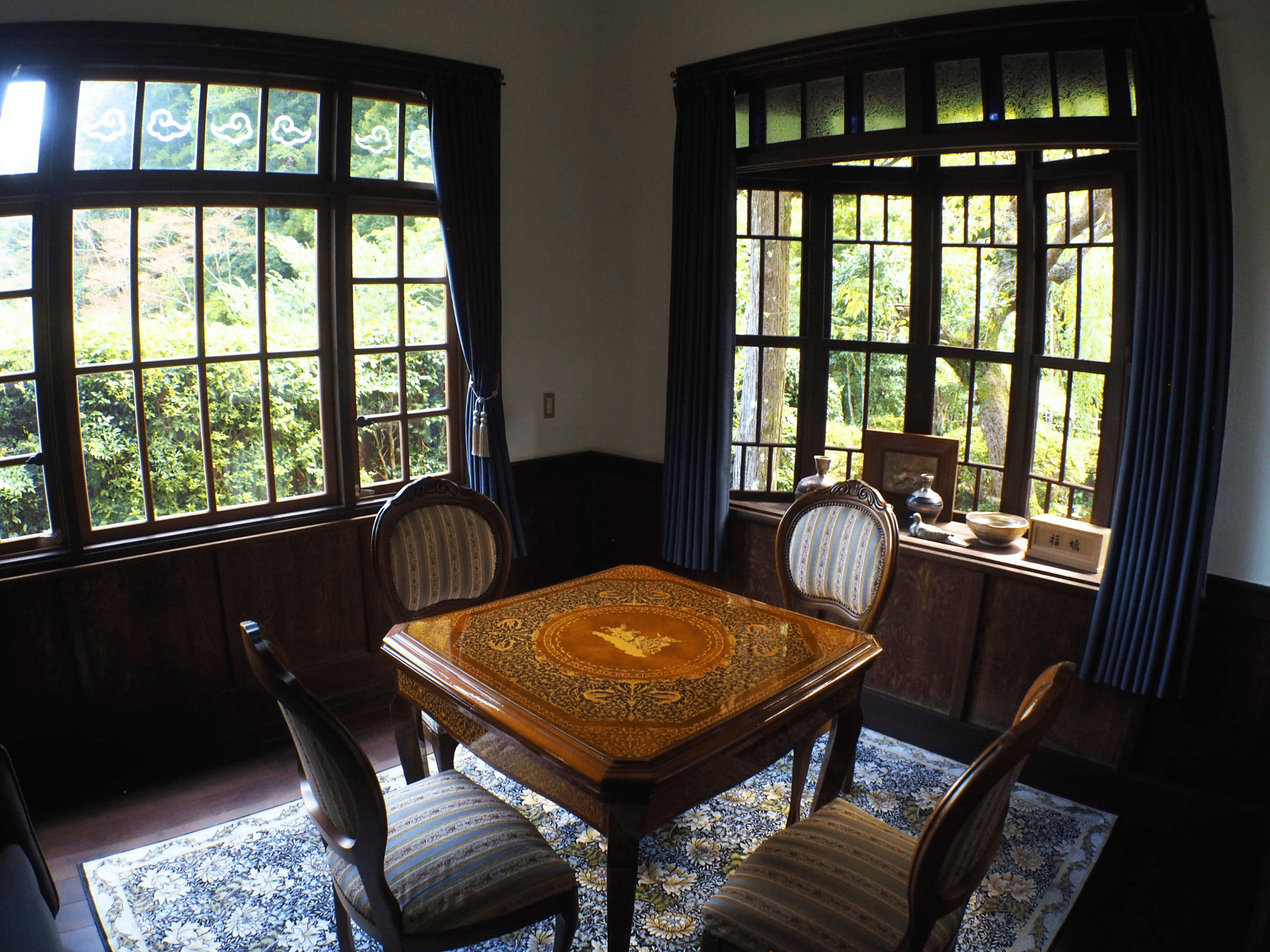
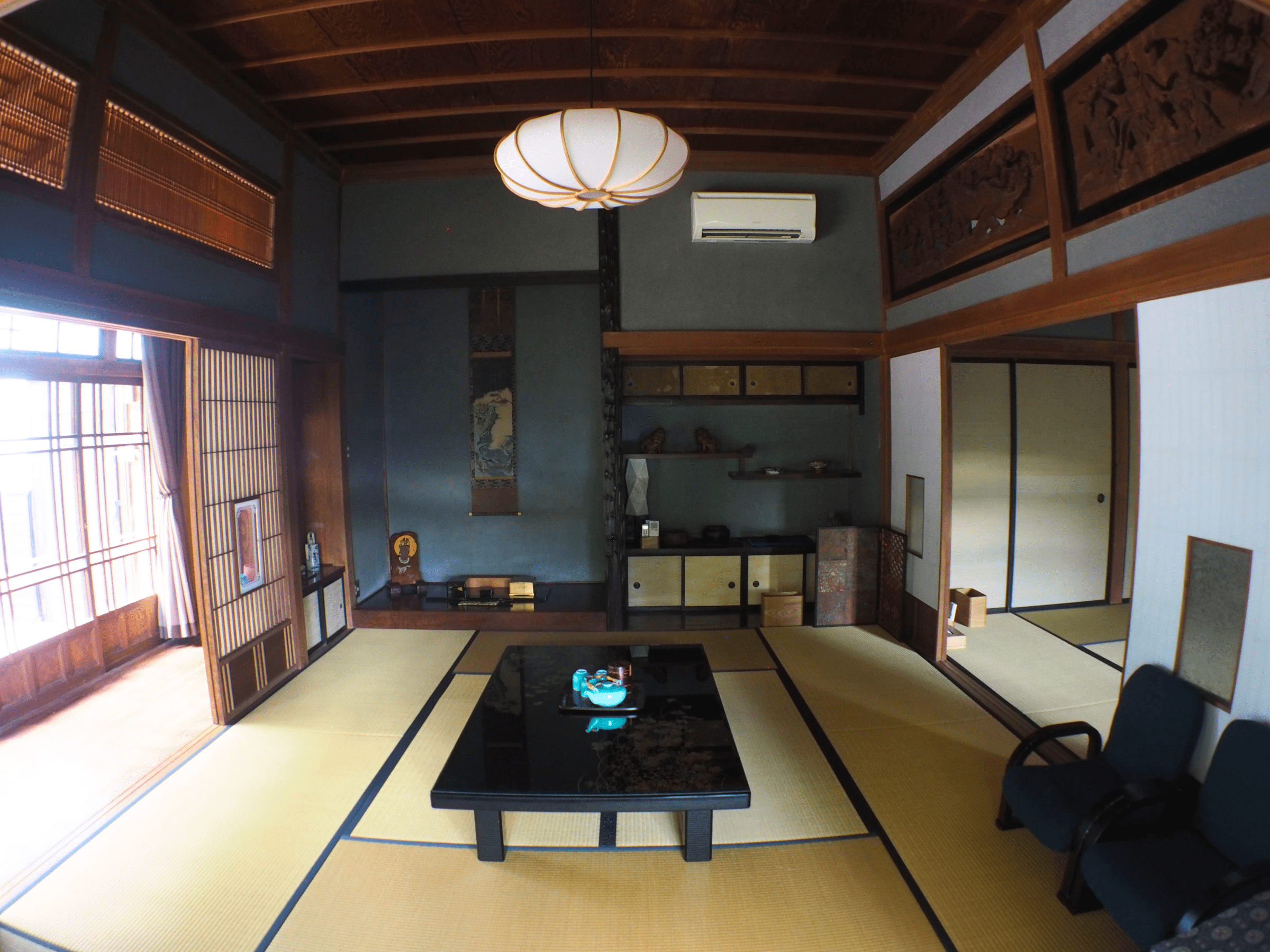
Just a 4-minute drive from Kakurinbo, this villa combines traditional Japanese elegance with modern luxury, offering an ideal retreat for families or larger groups. The villa features both a washitsu (Japanese-style room) with intricate ranma panels and a serene tea room atmosphere and a yoshitsu (Western-style room) that reflects the refined charm of early 20th-century Japan.
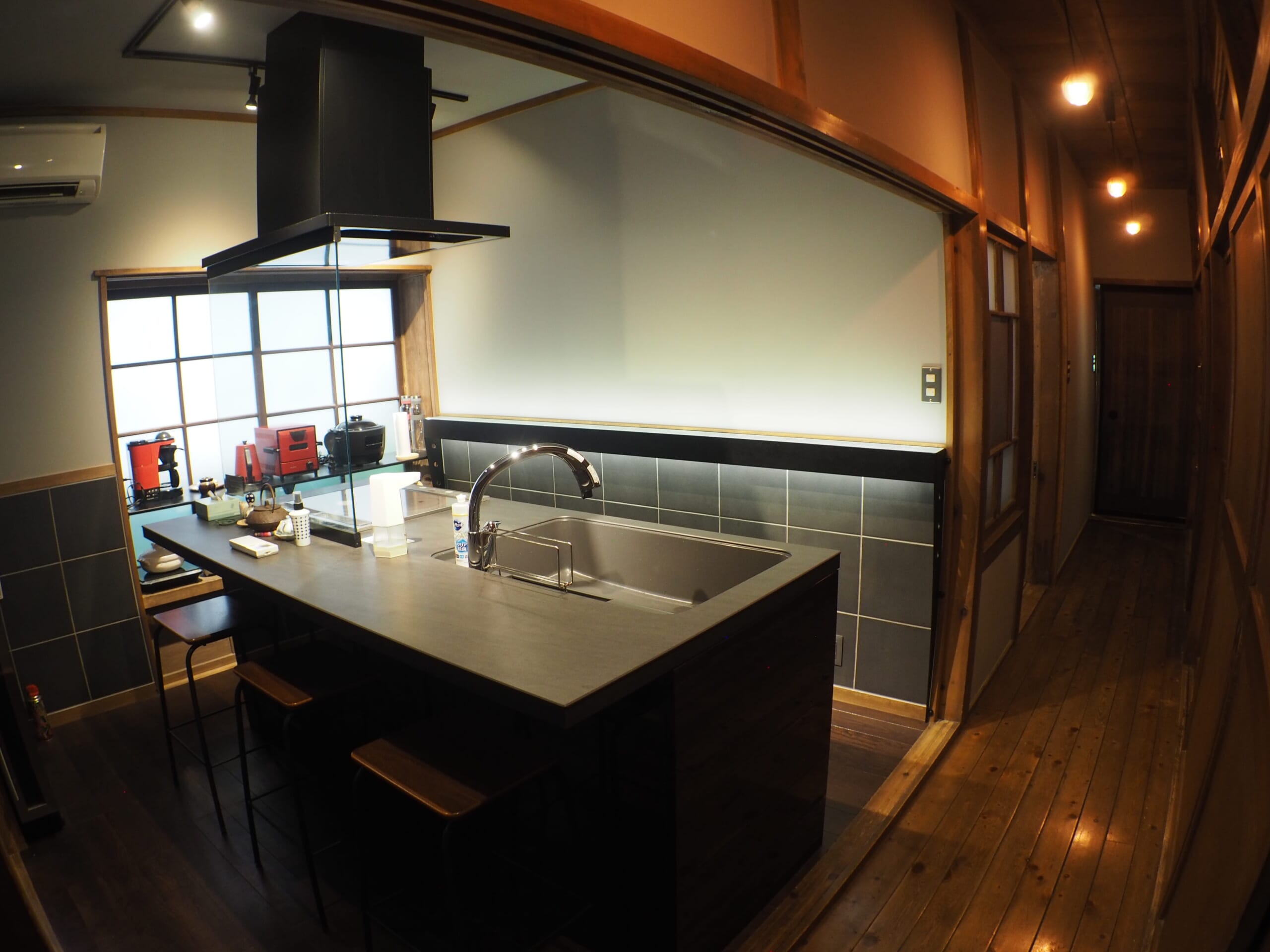
A spacious island kitchen, equipped with the latest appliances, allows guests to cook or enjoy meals together, while the small counter bar adds a casual, intimate dining option.
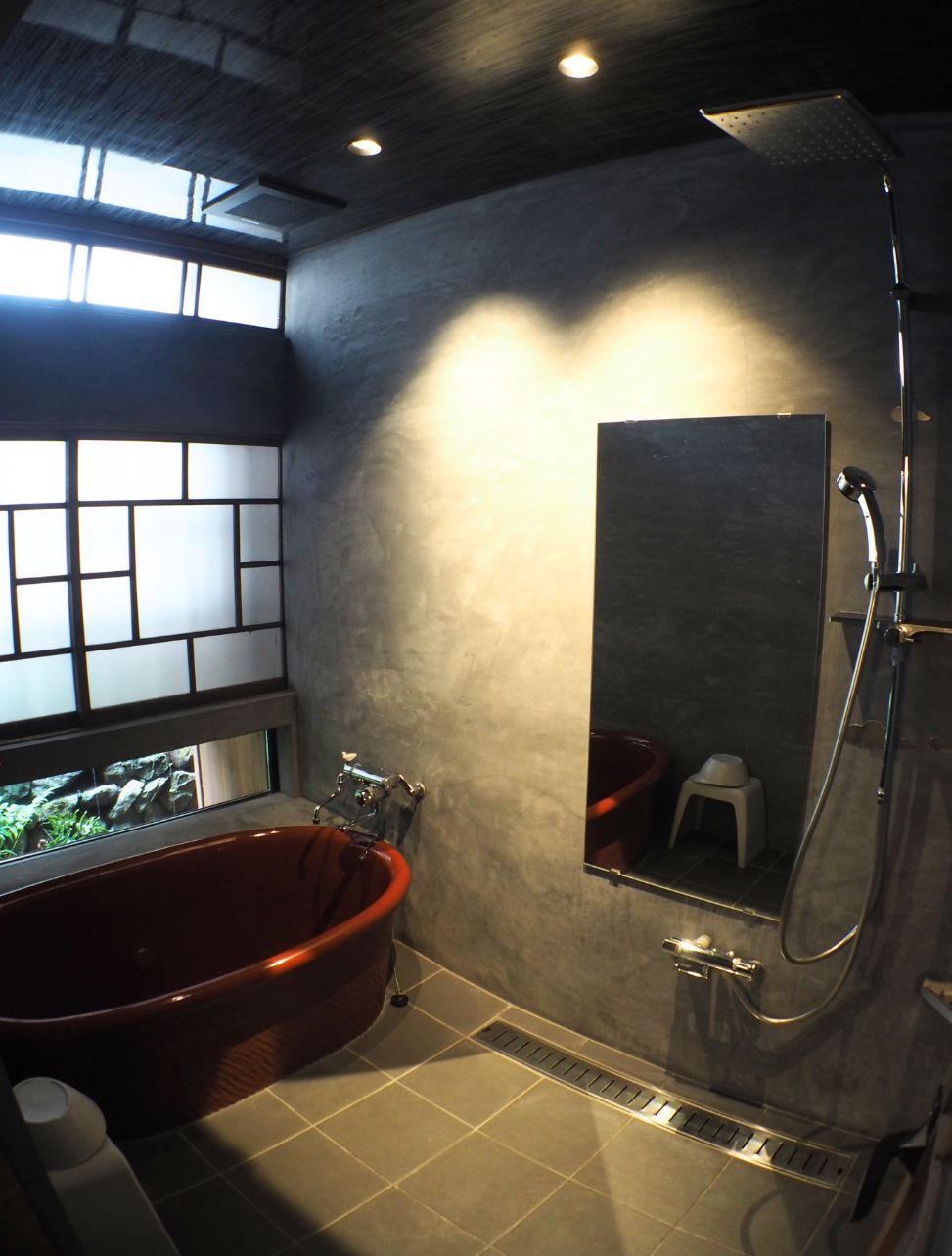
The villa’s bath merges modern comfort with historical details, featuring a red shigaraki ceramic tub and rain shower. Guests can relax while enjoying the view of a small stone garden. The bathroom also offers luxurious touches, including Edo komon-dyed yukata and carefully selected amenities.
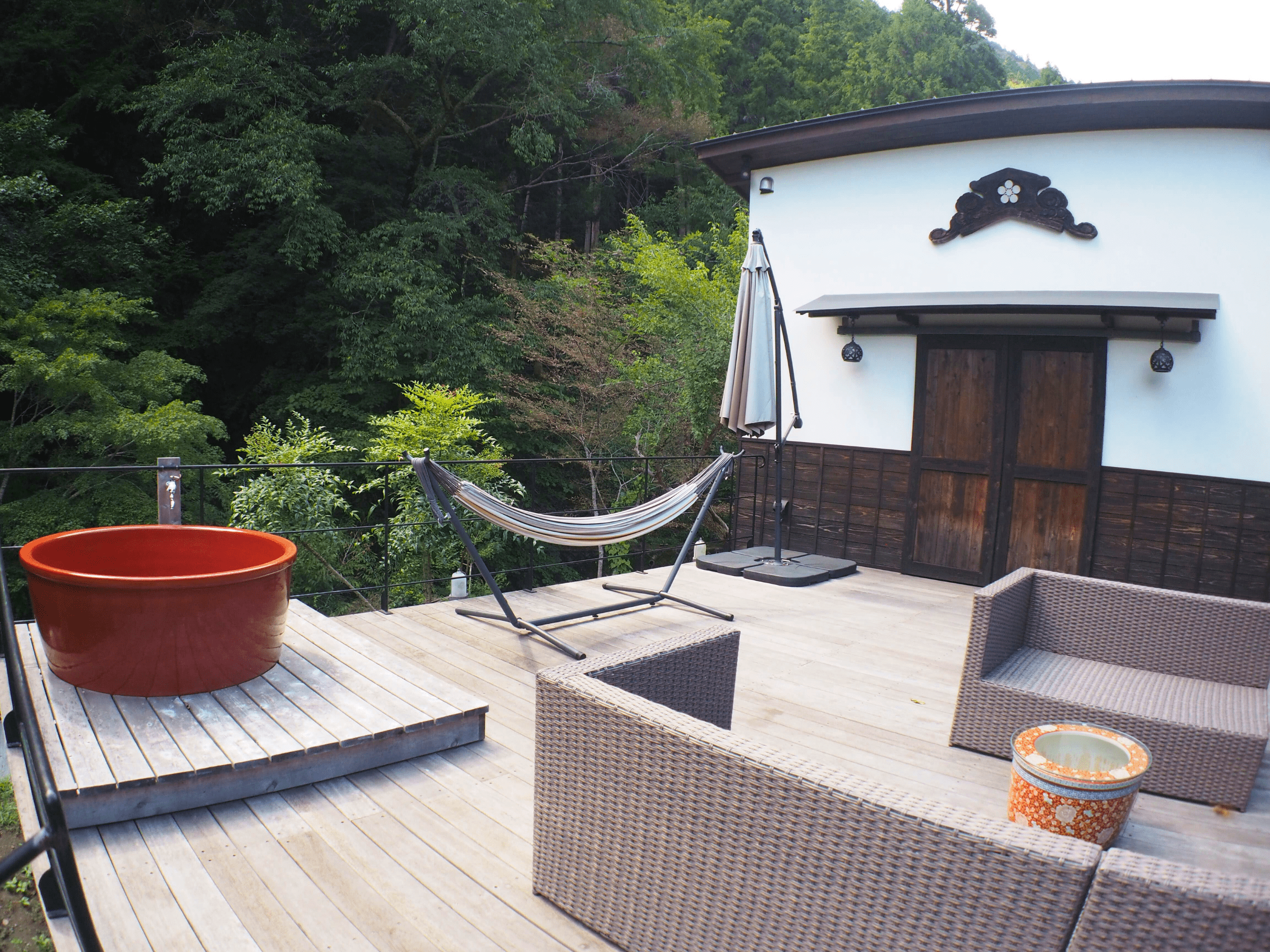
Outside, a wide deck with comfortable seating opens to the tranquil sights and sounds of a nearby river and lush greenery. The deck is perfect for outdoor dining, BBQs, or even small events like yoga sessions. With additional amenities like projectors and BBQ sets available for rent, Guest Villa Ebisuya provides a harmonious blend of tradition and comfort, ensuring a memorable stay.

Ebisuya provides a serene escape into Japan’s rich past.
6. Cafe Zencho
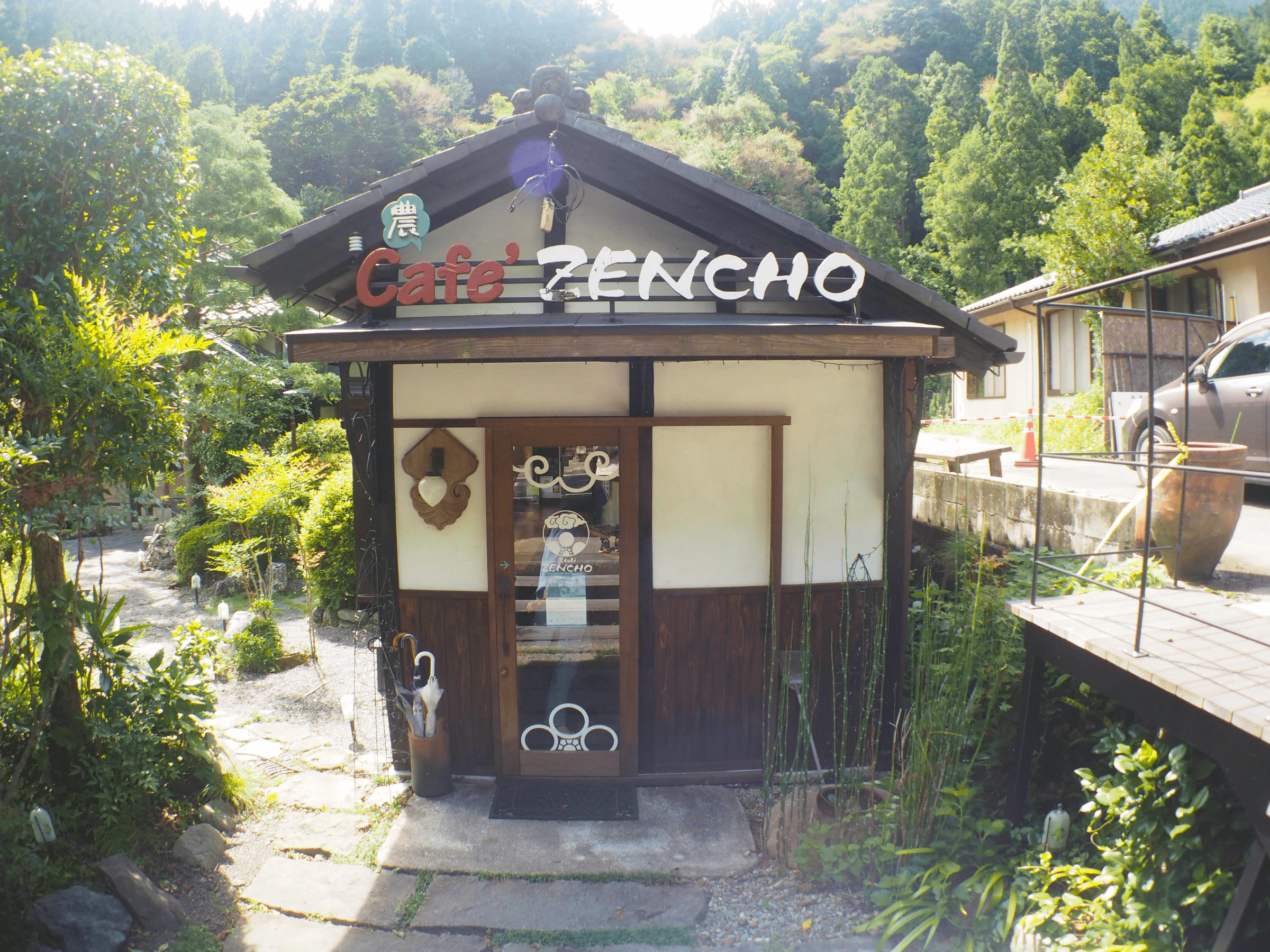
Located right next to the Guest Villa Ebisuya, Cafe Zencho offers fresh, healthy meals focusing on locally sourced ingredients.
Its menu changes regularly to reflect seasonal produce, with popular dishes including pasta made from Yamanashi’s famous hoto noodles, a dish that won the Cultural Agency’s “100-Year Food” award in 2023.
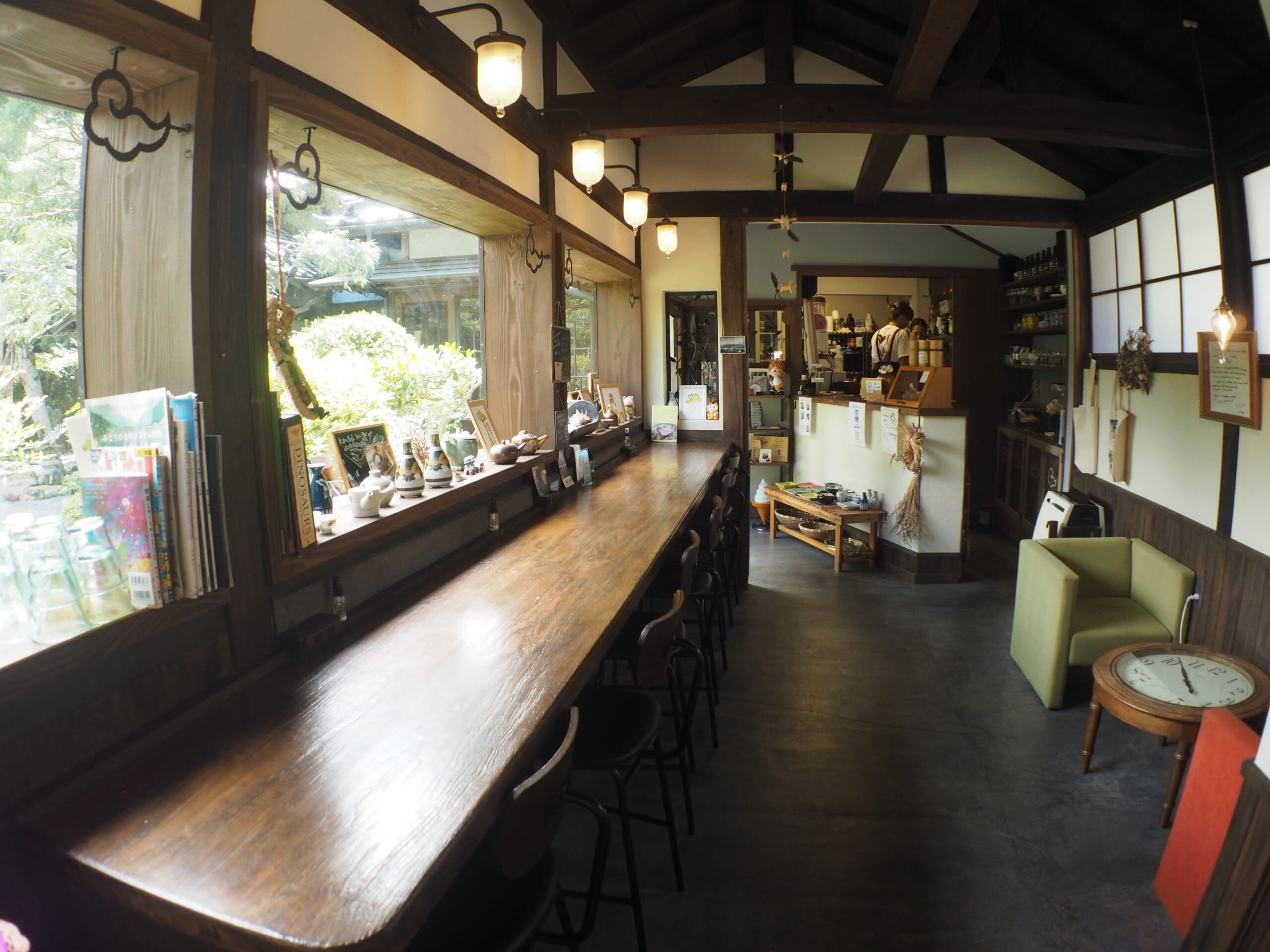
The cafe also serves sweet kinako bread and a variety of drinks, including Kakurinbo’s own Temple Beer. Open from breakfast through early dinner, Cafe Zencho features a cozy indoor bar and a spacious outdoor terrace, providing a relaxing spot for visitors to enjoy local flavors in a serene setting.
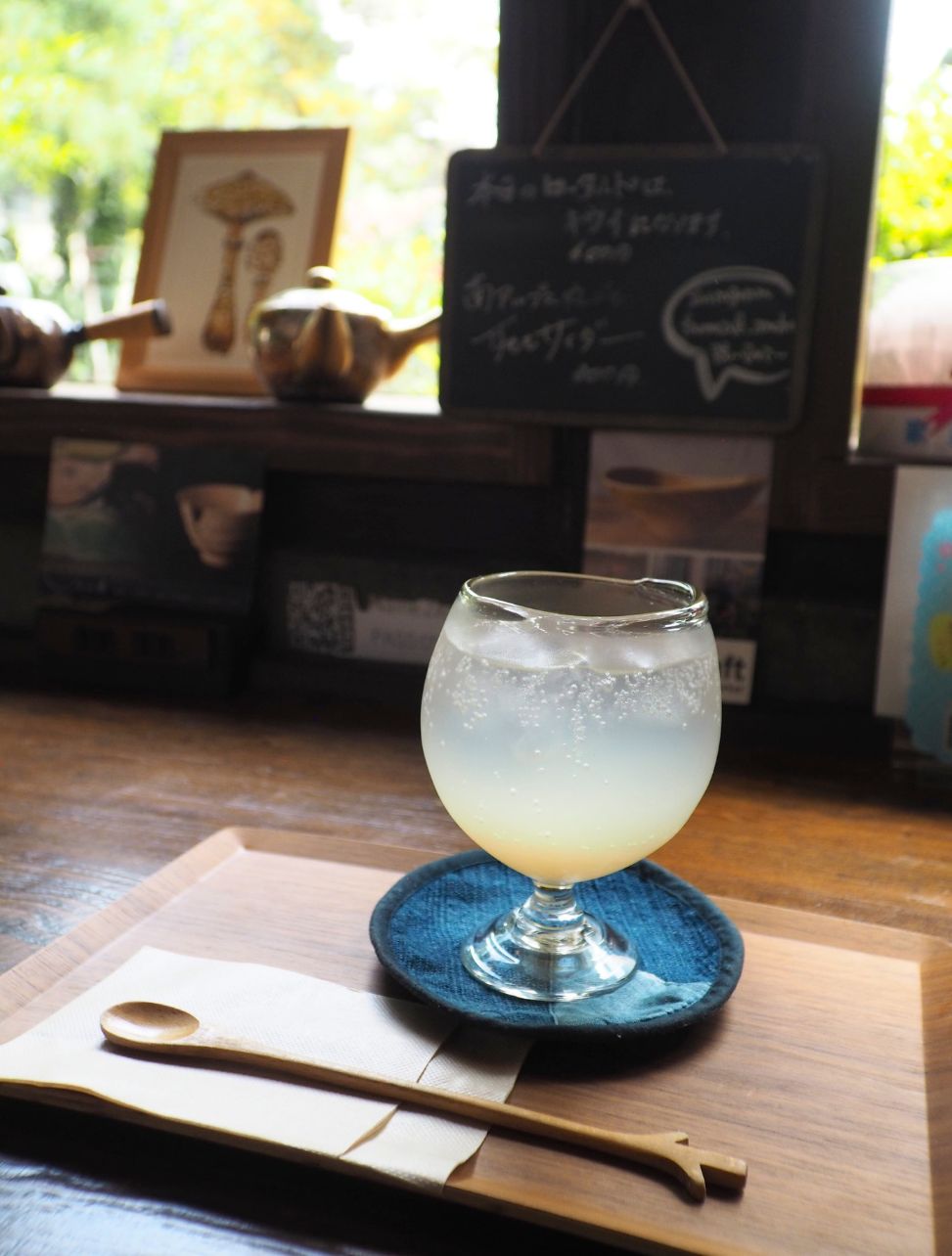

At Cafe Zencho, I had lunch on the first day. I first ordered the Homemade Ginger Ale and the Zencho’s Big Salad.


I also tried two tipes of Hoto pasta. the Carbonara and the Meat Sause. The cafe offers a set that includes a small salad and a desert (smoothie).
7. The Morning Service at Kuonji Temple
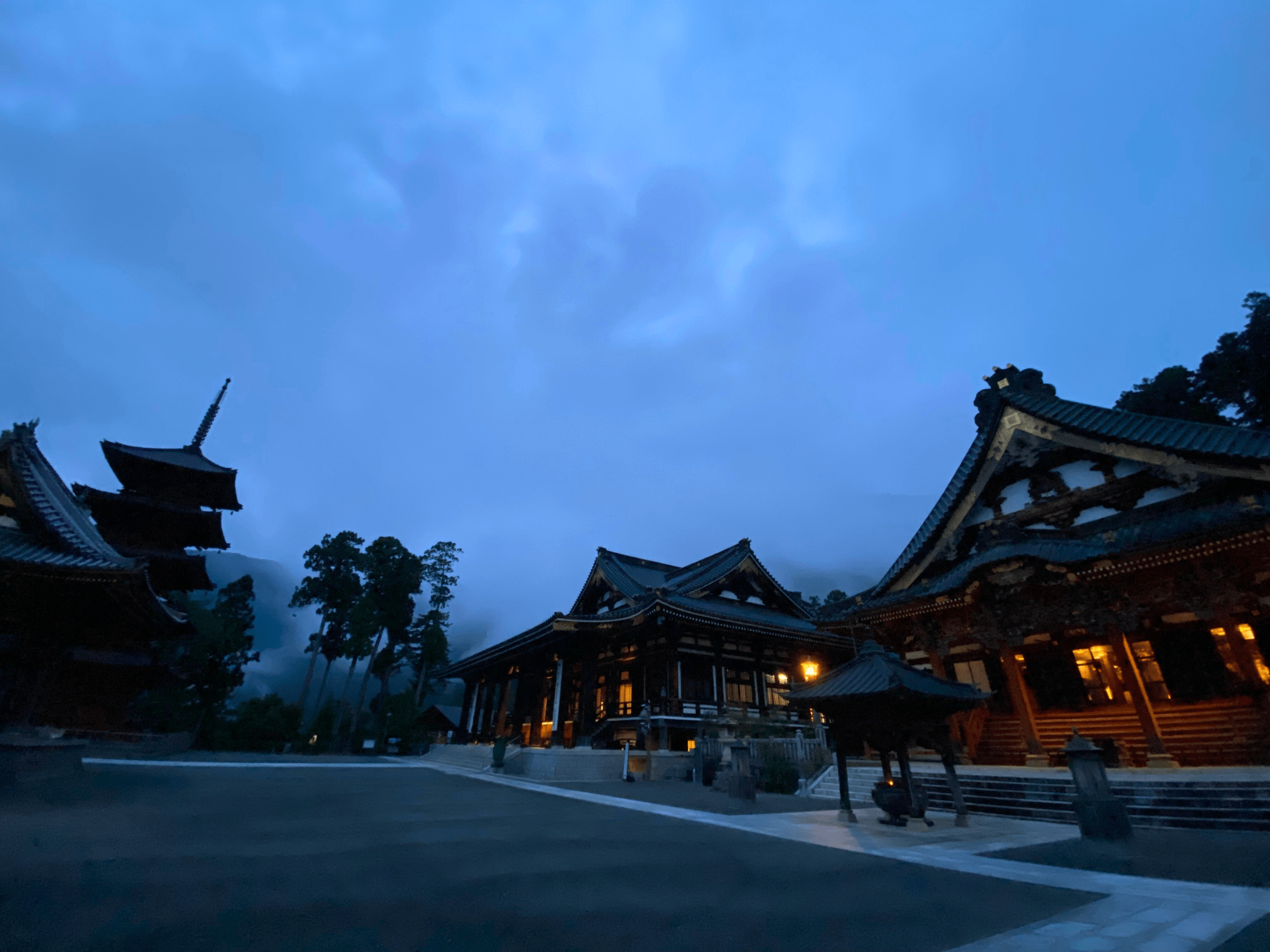
Attending the morning service at Kuonji Temple is a deeply spiritual experience and a highlight of any stay at Kakurinbo.
Unlike many temples in Japan, Kuonji offers free entry, allowing visitors to meditate or attend services without any fees. The temple remains open during service hours, so guests can come and go as they please.
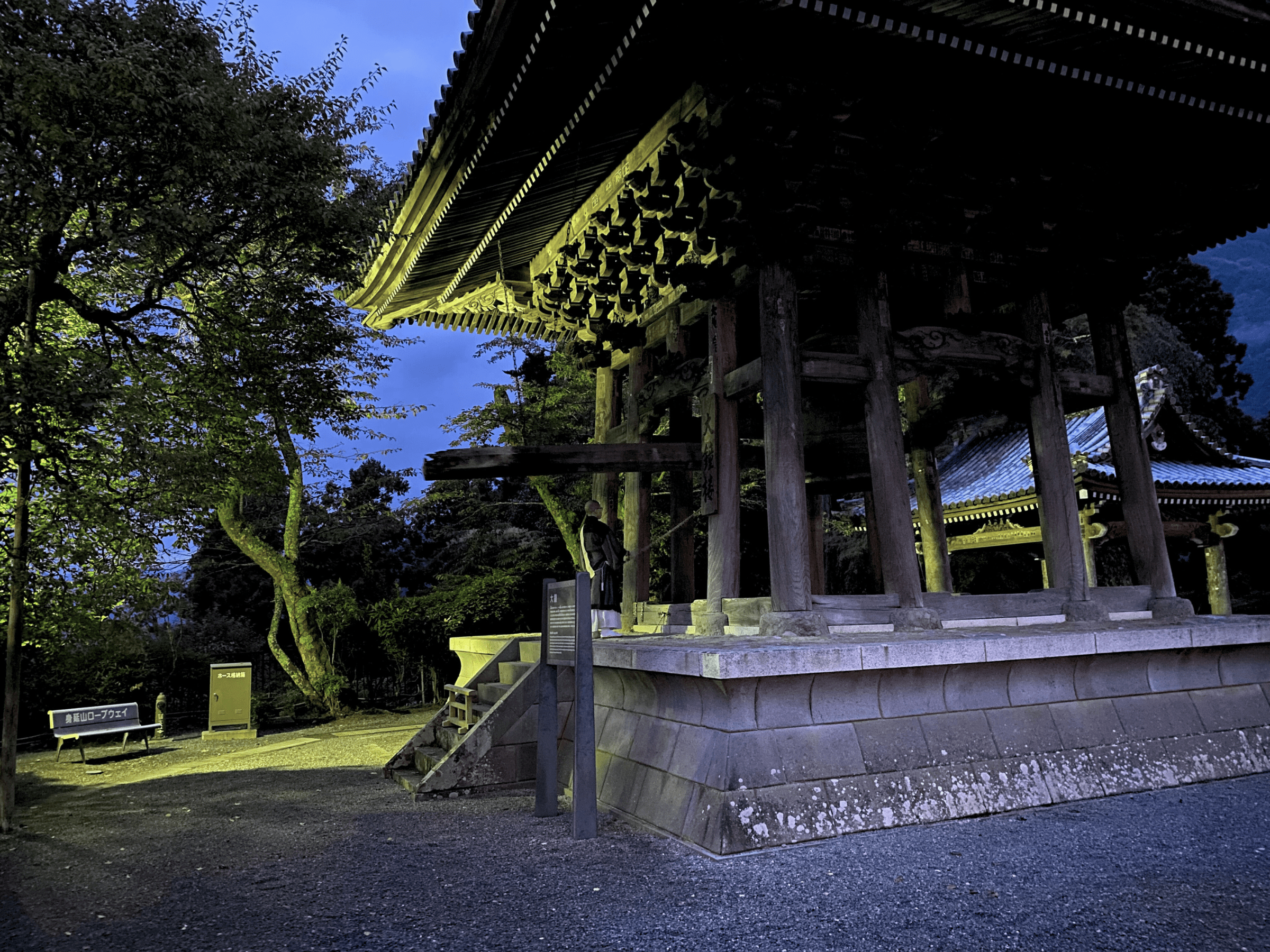
The service starts at 5:30 a.m. from April to September and 6:00 a.m. from October to March, with the temple bell ringing 30 minutes before the service begins.
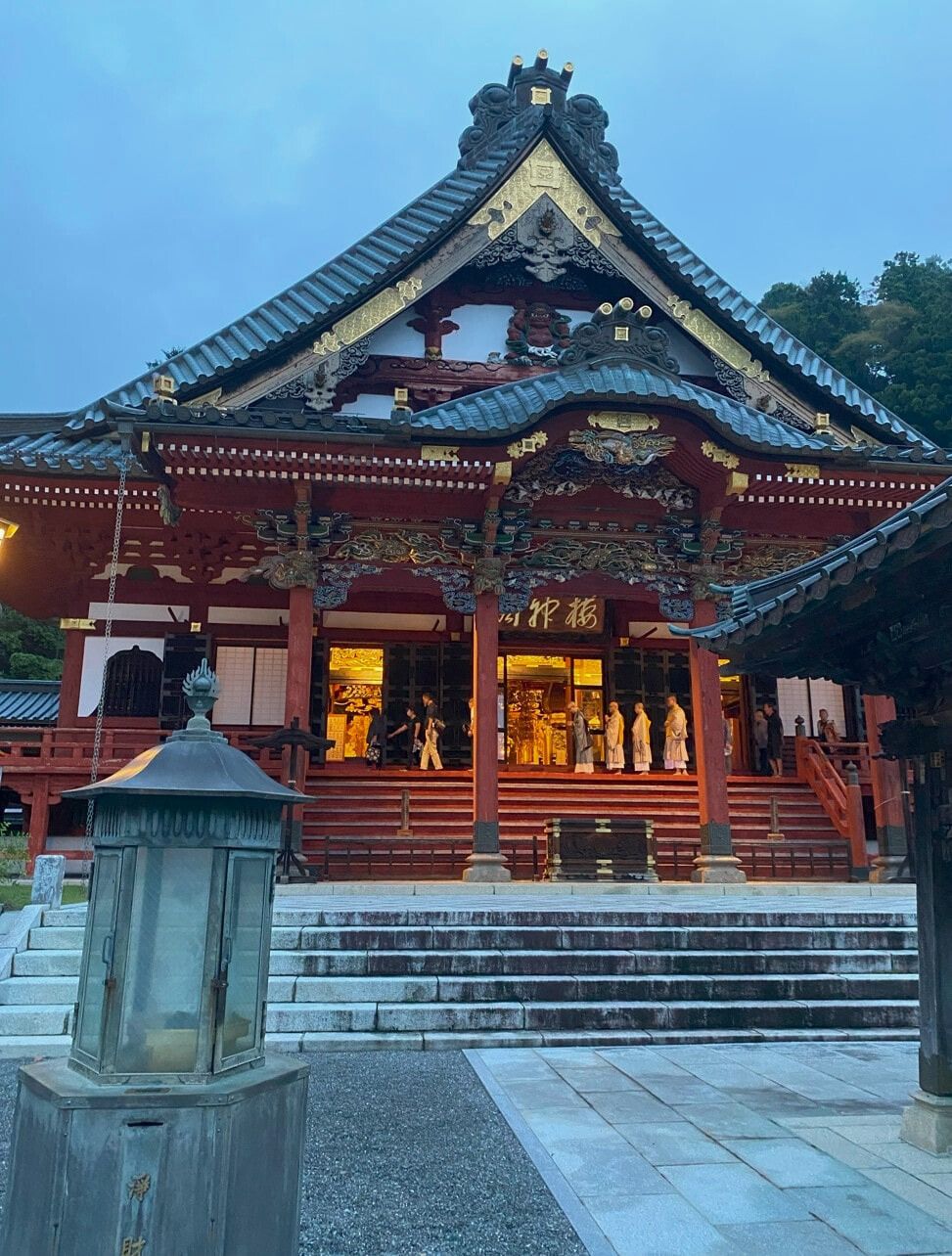
I left Kakurinbo around 4:40 a.m. to witness the bell ringing. The temple is just a 15-minute walk away. Kakurinbo provides a helpful guide to the service, explaining the proceedings and proper etiquette, ensuring that even first-time visitors feel comfortable participating in this serene ritual.
8. Experiences & Activities
At Kakurinbo, guests can explore 26 unique activities that immerse them in Japanese culture and Buddhist practices. I saw several of these during my stay, each offering a deeper connection to the temple’s heritage.

Sutra copying was a calming, meditative practice in the hondo (main hall), where an instructor guided the guests through preparing the brush and ink. Even if you don’t completely understand what you’re writing, it is a calming experience to sit down and focus on something you’re not accustomed to doing.

The morning yoga session, held right after the service at Kuonji Temple, allowed guests to fully embrace the peaceful surroundings. It was followed by a refreshing breakfast. This also takes place in the main hall, which has a completely unique vibe.
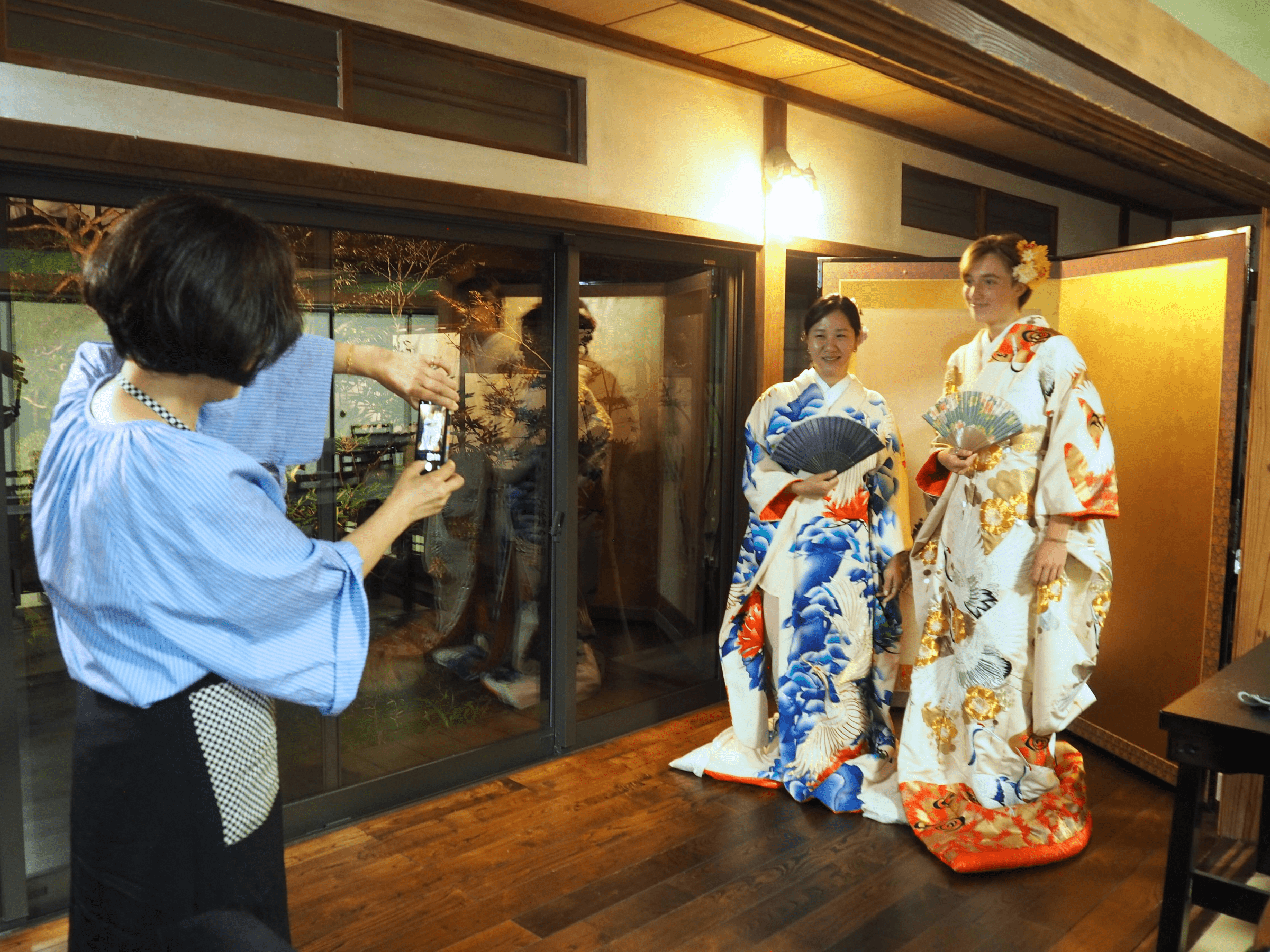
Kimono wearing allows for lovely photos in traditional attire. Usually, getting ready for a Kimono can take several hours, but thanks to a simplified version, it only takes a few minutes, so you can enjoy taking photos.

One of the most memorable activities was kintsugi (the art of repairing pottery with gold lacquer). Held at the Guest Villa Ebisuya and led by instructor Furuya-san, the session began with a video introduction to the art before hands-on guidance.
These activities provide a rich cultural experience, making the stay at Kakurinbo truly special.
Why You Should Go to Kakurinbo
My stay at Kakurinbo was truly enriching. It offered not only temple visits but also culturally valuable activities in a peaceful, scenic setting. The surrounding mountains, rivers, and fresh air created an ideal atmosphere for reflection.
Many international guests often mention wishing they had stayed longer, as the serene environment and numerous walking paths provide a perfect escape. The hike up Mt. Minobu, with its small temple rest stops, is particularly rewarding for those seeking a slower, more contemplative experience.
Kakurinbo’s location between Tokyo and Kansai makes it an ideal stop for travelers, whether coming directly from Narita or returning during their trip to recharge.
The temple’s welcoming, home-like atmosphere is often likened to the Italian concept of “Albergo Diffuso,” where the entire town feels like a hotel, and the temple lodgings serve as individual rooms. This concept of hospitality, combined with a focus on cultural immersion, represents a form of “Educational Tourism” that allows visitors to reconnect with the “spirit of simplicity” while gaining a deeper understanding of Japanese culture, history, and nature.
Can you come to Kakurimbo?
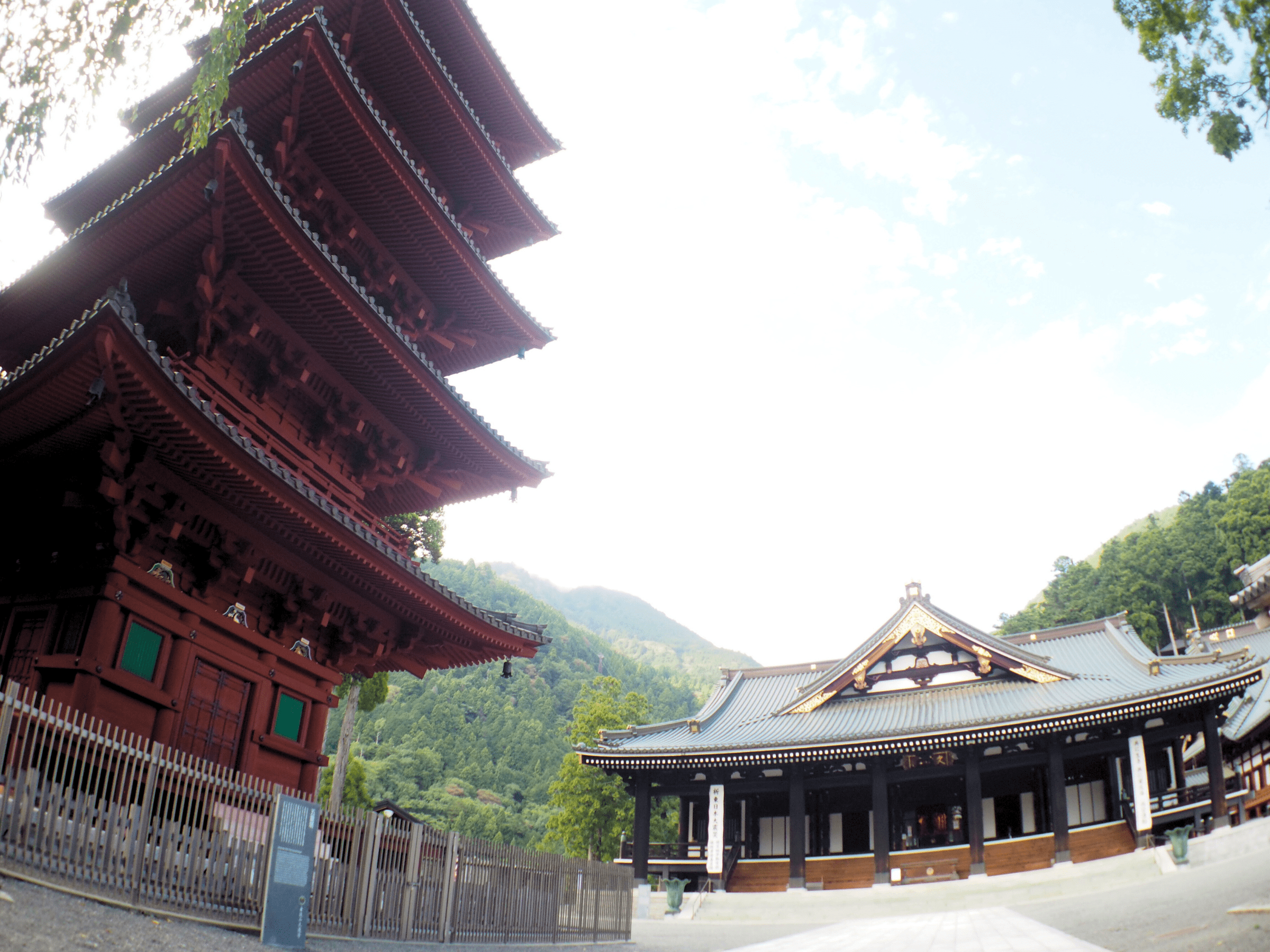
In October 2024, Kakurinbo will host a special monitor tour, inviting international and local guests to experience the temple stay and the surrounding areas. This tour will include exclusive access to Kakurinbo’s facilities and activities, making it an excellent opportunity for those curious about Mt. Minobu and temple stays to get a firsthand experience.
The tour will take place from October 28th to the 30th. Visit Kakurinbo’s website for more details about how to participate.
*will add the link here as soon as the information page is ready
Access
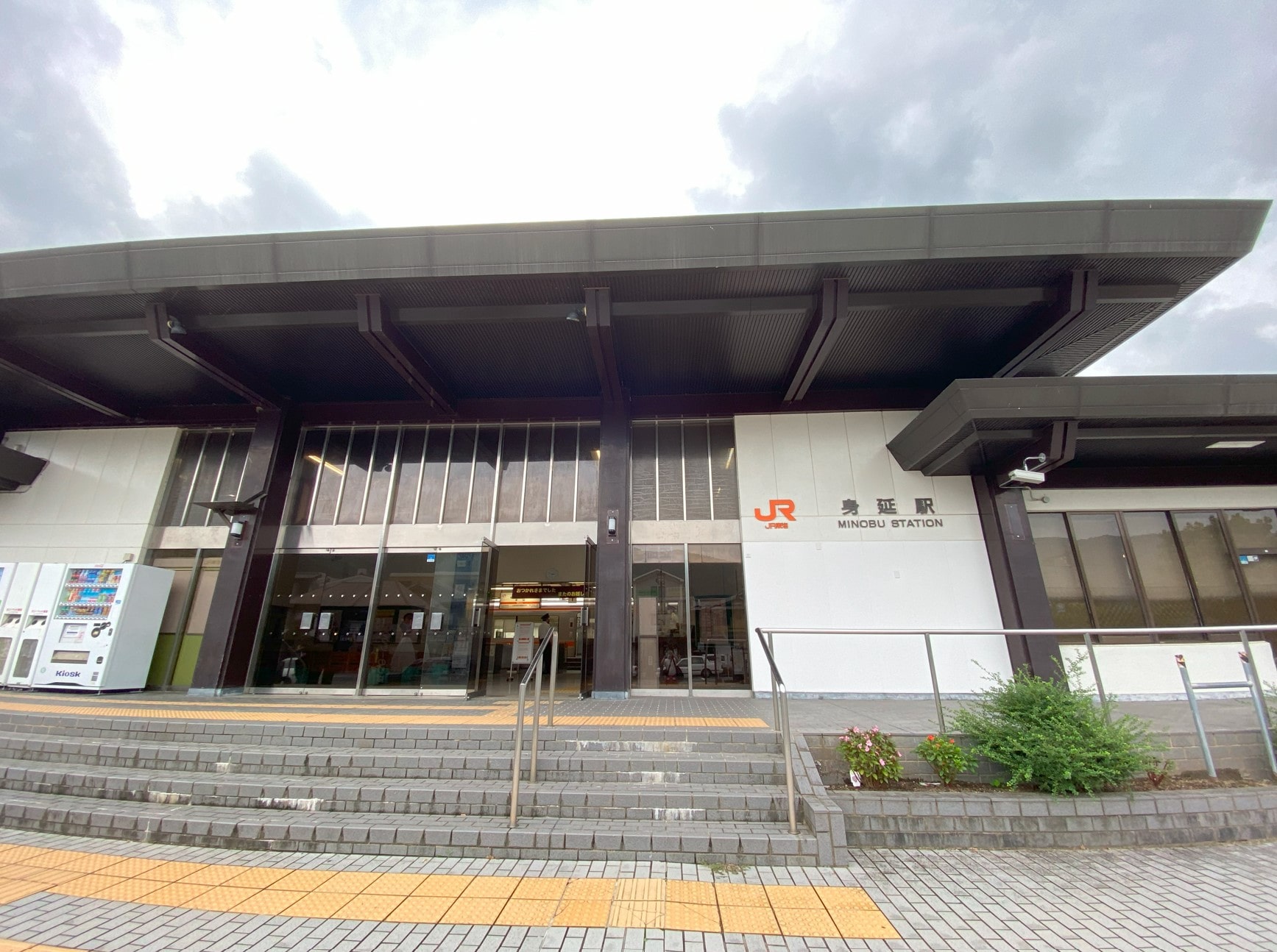
Getting to Kakurinbo is convenient from both Tokyo and Kansai areas, with several options available depending on your starting point.
For those traveling by train, the closest station is JR Minobu Station. From Minobu Station, you can take the Yamanashi Kotsu bus bound for “Minobusan” and get off at the final stop, “Minobusan.” From there, it’s about a 10 minute walk to Kakurinbo.
From Tokyo:
Via the JR Chuo Line: Take the JR Chuo Line express from Shinjuku to Kofu (approximately 1 hour and 40 minutes).
From Kofu, transfer to the JR Minobu Line express to Minobu (approximately 1 hour).
Via the Tokaido Shinkansen: Take the JR Tokaido Shinkansen from Tokyo to Shin-Fuji (approximately 1 hour and 15 minutes).
From Shin-Fuji, transfer to the JR Minobu Line express to Minobu (approximately 1 hour).
*You can also take the highway bus from the Shinjuku Bus Terminal, as I did. This bus will take you directly to the “Minobusan” bus station, making it simple. There are only a few buses daily, so you must check the itinerary first.
From Kansai (Osaka/Kyoto):
Via the Tokaido Shinkansen: Take the JR Tokaido Shinkansen from Shin-Osaka to Shin-Fuji (approximately 2 hours and 50 minutes).
From Shin-Fuji, transfer to the JR Minobu Line express to Minobu (approximately 1 hour).
 Access Access |
From JR Minobu Station, take the Yamanashi Kotsu bus bound for "Minobusan" and get off at the final stop, "Minobusan." From there, it's about a 10 minute walk. |
|---|---|
 Official Website Official Website |
https://kakurinbo.jp/english/ |
▽Subscribe to our free news magazine!▽
For more information about Yamanashi and its surrounding area, check out the following articles!
▽Related Articles▽
▼Editor’s Picks▼
Written by
Born and raised in Costa Rica, I started living in Tokyo from college. I love traveling within Japan & around the world. Since I wasn’t born in Japan, I know the cultural impact that you can get when visiting Japan for the first time and what you might be worried about before your trip. And I’ve lived long enough to somewhat understand the nuances of the Japanese culture that make this country such an attractive place to visit. Hopefully I can provide to you both the information you’re looking for and the information you didn’t know you needed to know.





